Solo Backpacking trip to Hampi, Gokarna and Goa
22 Mar 2019 #travel #backpacking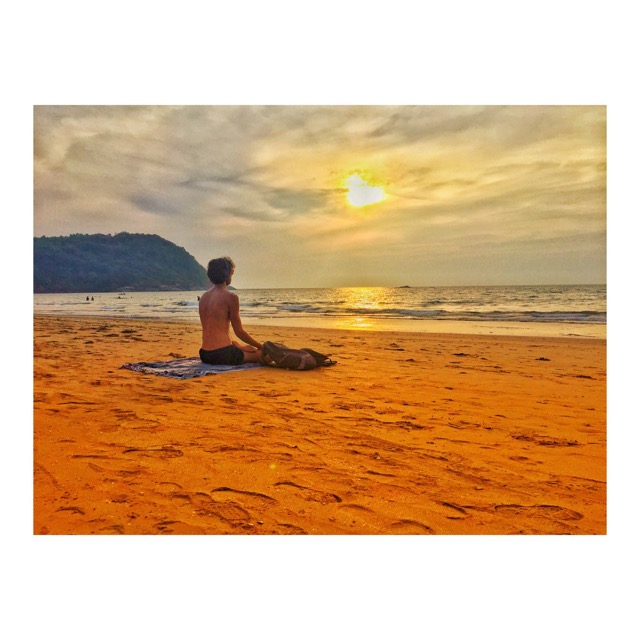
It was a cold Friday night, had just come back home after wrapping up the farewell party which was thrown by my colleagues from my last company. I was feeling worn out of all the activities from the day, but I kept reminding myself that I had to start packing for the impromptu solo backpacking trip which I had planned before I joined my next gig in the coming 10 days.

Where was I planning to go?
Hampi the imperial capital of Vijayanagar, a 14th century empire
Hampi is the forgotten empire, there was a time when diamonds were sold on the streets before it’s fall. Such was the grandeur.
Hampi rose into prominence in the early 14th century when the Kampili Kings rose to power. In 1327, the kingdom was attacked by Muhammad-bin-Tughluq who took two brothers, Bukka and Harihara as prisoners along with thousands of other people. These brothers tricked the Sultan into setting them free and returned to Kampili to set up a kingdom of their own with its capital at Vijayanagara. Thus the Vijayanagara Empire was founded by Harihara I and Bukka I of the Sungama dynasty in 1336. The Sungama dynasty was followed by the Saluvas and the Tuluvas each of whom added Vijayanagara’s architectural beauty.
At one point Hampi was also one of the biggest trading centres of the world. Vijayanagar brought a lot of wealth, fame and splendour to Hampi. In those times, most markets in Hampi were always crowded and swarming with buyers and also merchants.
The empire encompassed almost the whole of modern South India.
It is quite a unique experience I would say. On one hand, you experience a culture rich in history(every street and corner is steeped in history) and on the other hand on crossing the river, you enter into another world — Virupapur Gadde or more popularly known as the Hippie Island. Contradictory indeed! You will find the street lined with cafes which cater to foreign tourists from all over the world. Tourists from Israel are a common sight.
The easiest way to reach Hampi is to take a bus till Hospet. After which you can take a city bus to the town of Hampi. Which barely costs you anything. If you are feeling lucky, you can book a Karnataka sarige class, KSRCTC bus from Bangalore’s Majestic bus stand, till Hospet like I did. But a fair warning is that, if you have a big rucksack with you and are looking for a good night’s sleep(which I feel everyone does), you are better off booking a better bus service for yourself. But nonetheless, it’s a very good service, provided it charged me just about 230 INR, for a distance of close to 300 km.
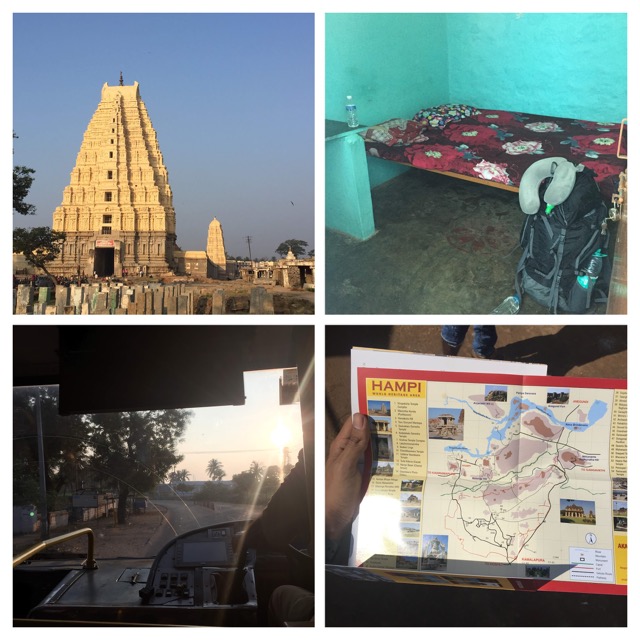
For staying around Hampi, you can book one of the lodges which are nothing but the cafe’s around the Virupaksha temple, the prices are quite cheap. I booked myself a room for a meagre 450INR for two nights in of the nearby lodges. The one which I was staying in, had bathrooms which were not well maintained at all. I was lucky that there was a public bathroom near the lodge, where I used to get done with my business. But given the price of the lodge, I wouldn’t have expected any better.
There is one particular food joint just right next to the lodge, which used to serve Dosas and I used to get breakfast and dinner, along with some tea. The smell of the batter getting cooked on the stove and it getting served on your plate with some hot sambar. Heavenly!
The plan for the very first day was to get a cycle (they can be rented at around 100/200 INR for the whole day) and cover the area near Virupaksha temple and the road which leads to the southern parts of the ancient city.
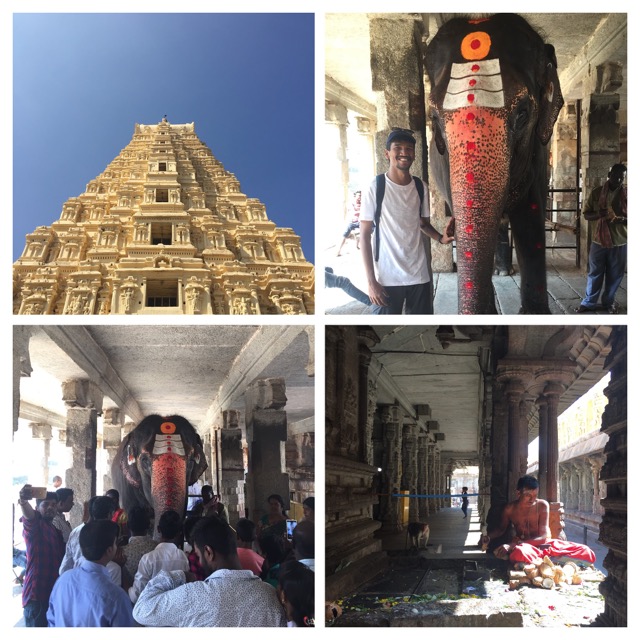
It’s part of the group of monuments at Hampi, designated as a UNESCO world heritage site.
The day on which I visited, it just so happened that there was a marriage ceremony going on. There was a huge crowd which is as expected. Lakshmi, the temple elephant would be seen blessing the visitors with her trunk. I would later get to know that it’s quite common for weddings to happen here.
Right next to the temple, is the Hemakuta hill which leads to other temples in the vicinity. The hill encircled on its three sides by massive fortification. To the north is the enclosure wall of Virupaksha temple. The complex has three gateways. More than 30 shrines stand on this hill. These vary from elaborate structures with multiple sanctums and rudimetaries, single-celled construction. Most of these temples have stepped pyramidal type of superstructure.
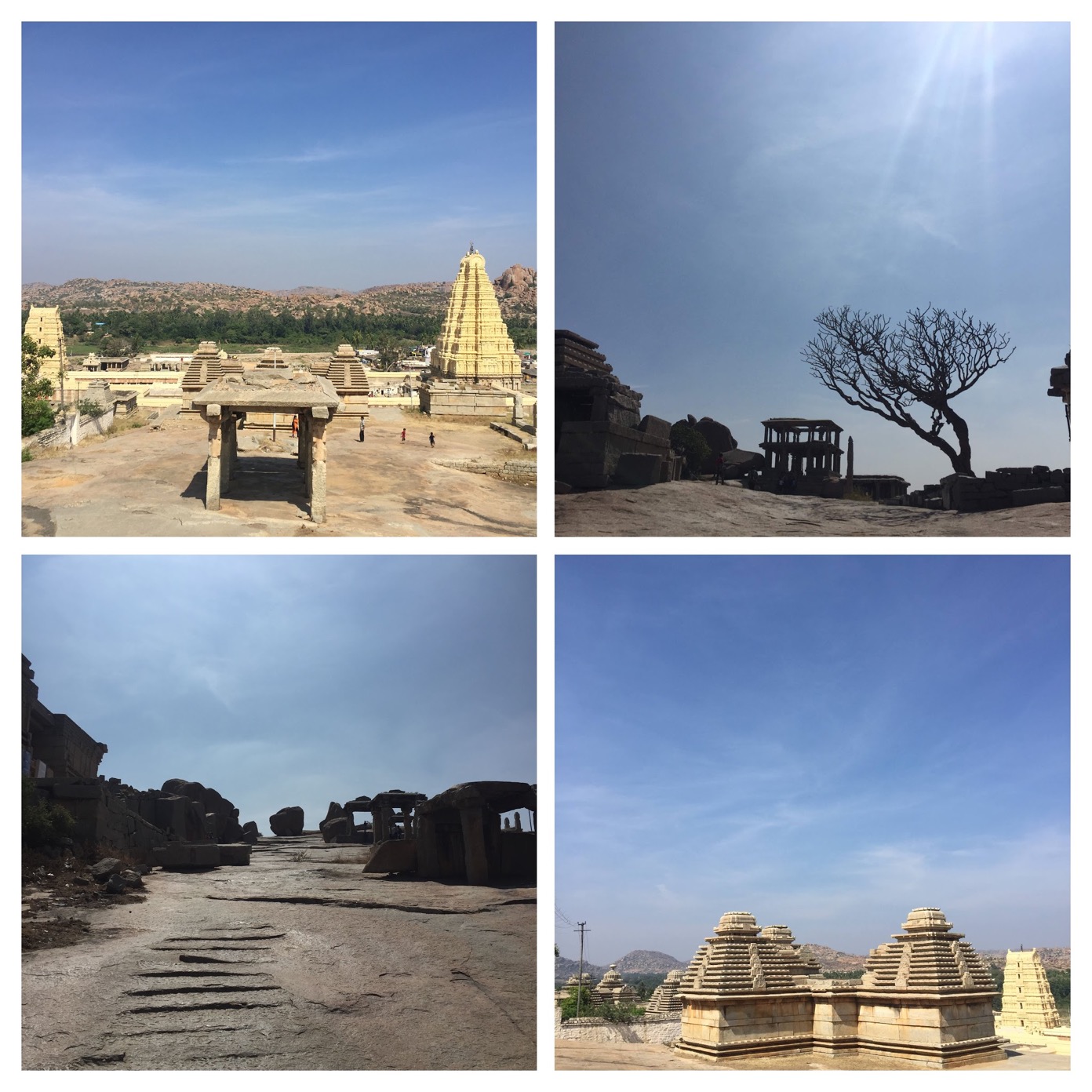
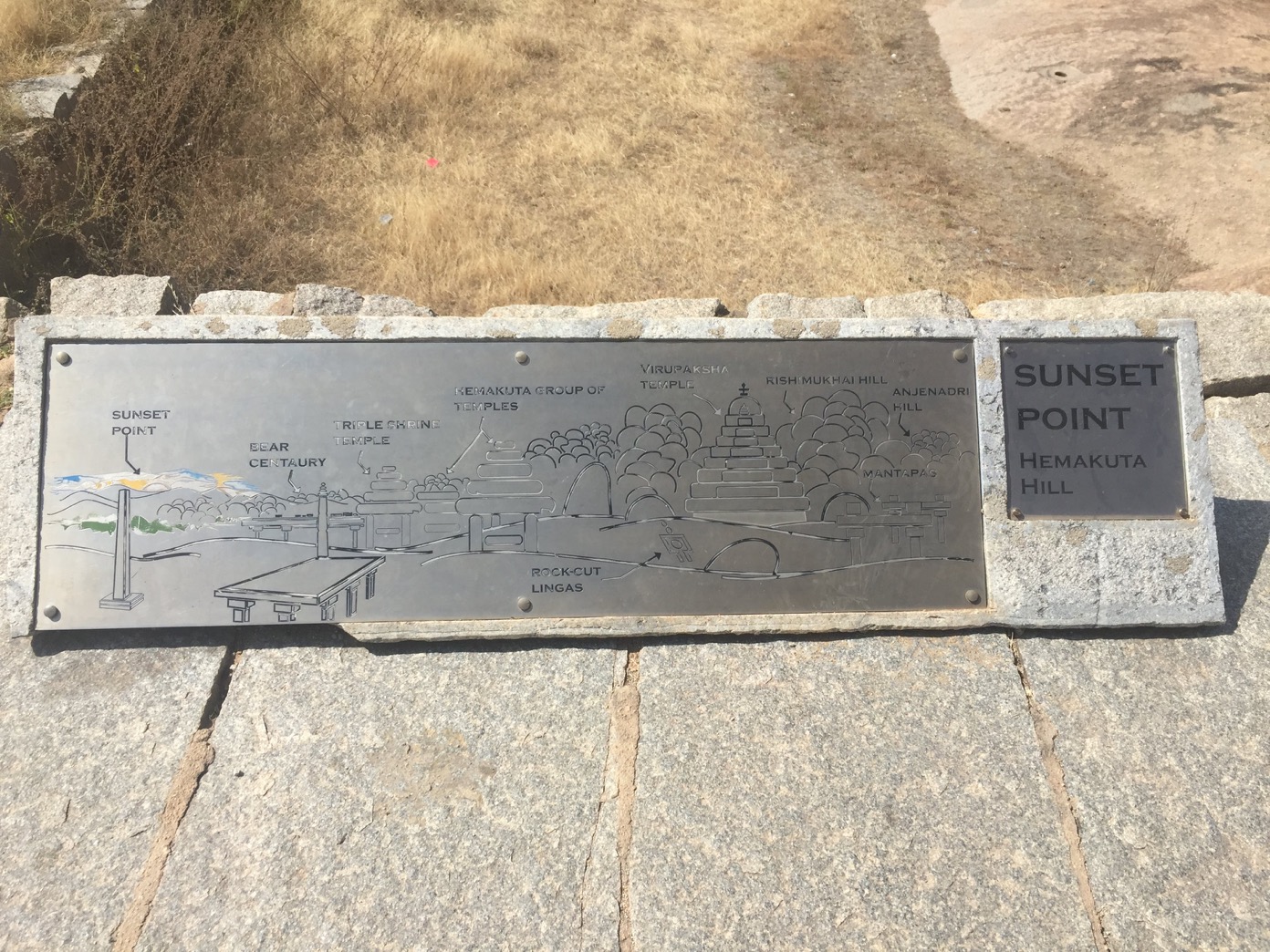

There is a part of the empire, which used to be the palace grounds of the king. It had a part where the sacred water tanks are situated. The sacred tanks were related to various rituals and functional aspects of the temples and the people surrounding the temples. The tanks were considered to be sacred places by the people of Hampi in ancient times.
There are some water tanks that are not related to the temples. Some of the water tanks are situated within the Royal Enclosure and they were built for the use of the members of the royal family of Vijayanagara. There were a few large public water tanks as well that were for use of the general people.
The pushkaranis in Hampi was an integral part of the people’s lives during the time of the Vijayanagara Empire. Since the temples were an important part of the social and cultural lives of the people of ancient Hampi, the water tanks also gained significance among the people.
In many cases, the water tanks served as the venue for the annual boat festivals. During such festivals, the images of Gods and Goddesses were taken out of the temples for a coracle ride on the water tanks. Sometimes the images were placed on the pavilions that can be seen in the middle of some of the pushkaranis.
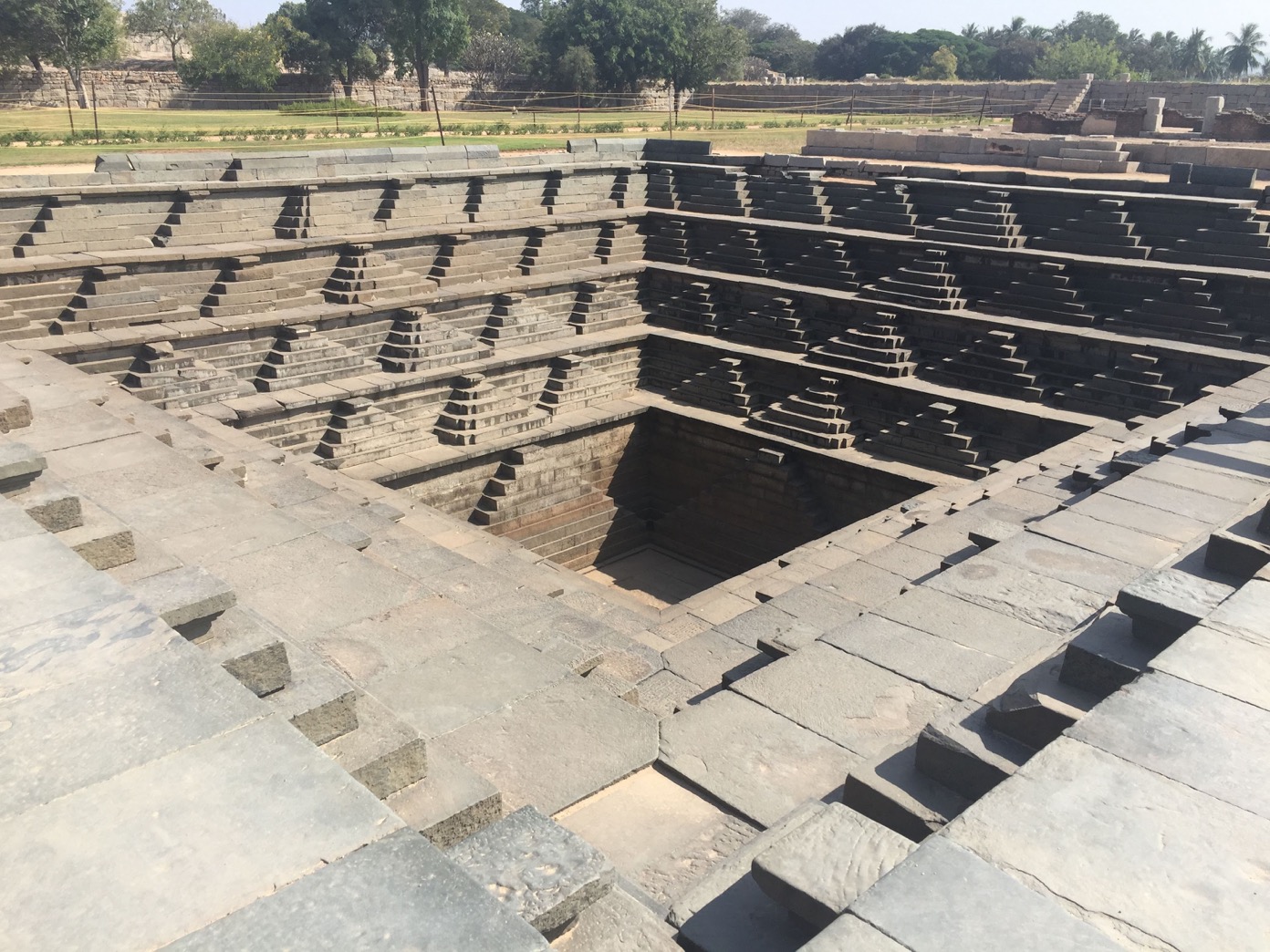
The one you see in the pictures, is the pushkarani of the royal enclosure. The key attraction of the tank is the symmetrical layout of the steps. It is a 5 tiered tank where each tier comprises of a few steps.

The soldiers used to eat their meals in these giant stone utensils, that’s about 5 times the size of an average eating utensil which you can find at a regular household these days. The city had it’s drainage system even back then, which is something very rare in civilisations of that time.
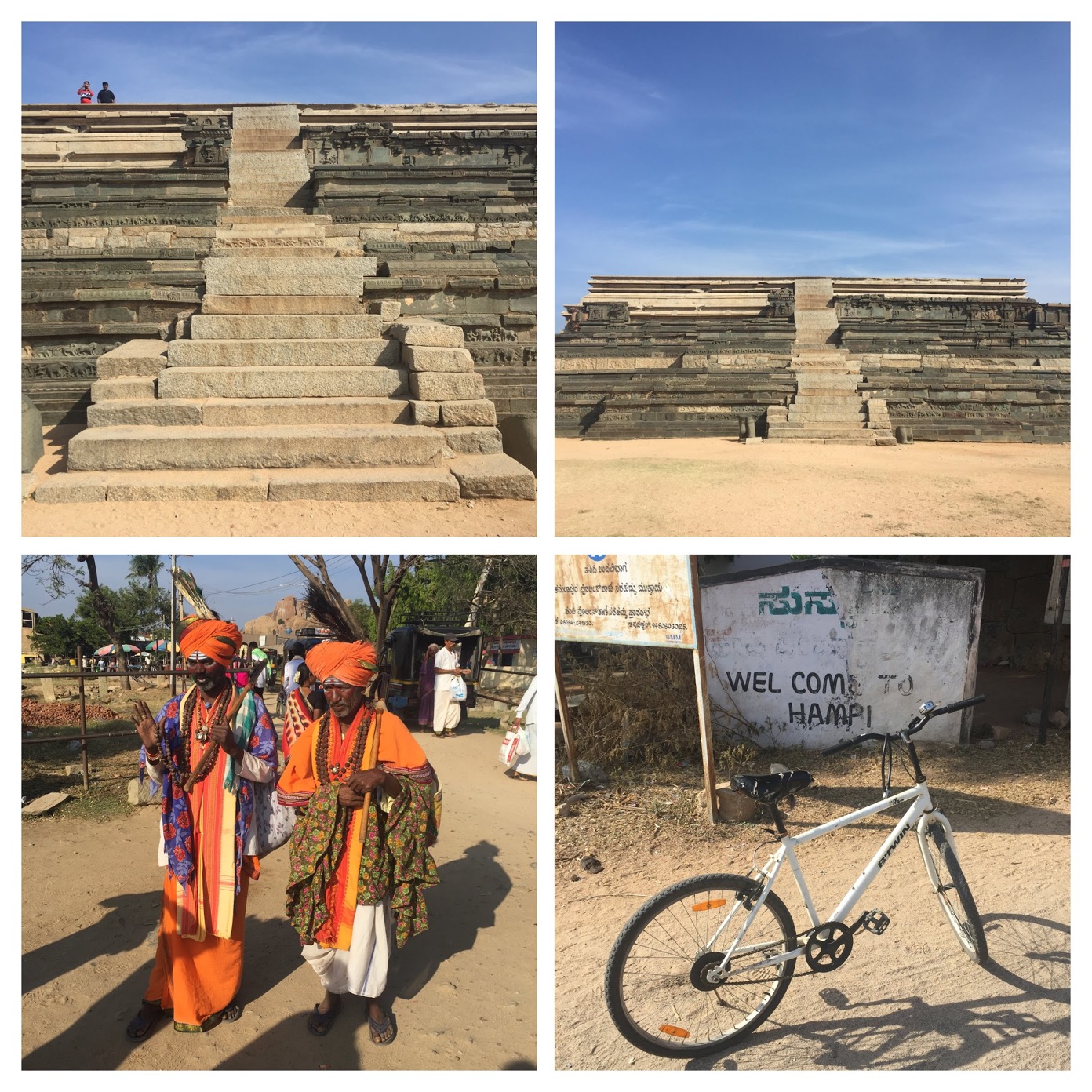
The structure which you see on the top is called the Mahanavmi Dibba, a three tired stone platform, rising to a height of 8 meters. and is located to the north-east of the royal enclosure. It was one of the most important ceremonial structures of royal used, built in granite and subsequently encased in sculptured schist stone. It is dated circa 16th century AD.
There are references to the use of the platform by the royal family, for important festivals like Mahanavami, by Abdur Razak and Domingo Paes.
Right behind the Virupaksha temple, is the massive Tungabhadra river flowing. It’s quite a sight during sunset. The common folks of the village cross the river to the other side of the river using the circular boats which look really cute. More on that in a little bit.


One of the best parts of travelling is that I get to have conversations with folks whom I generally wouldn’t have gotten to have a chat with. This time being no different.
I met Yang, who hails from Japan. When I met him, he already had been travelling for quite some time. He had been hiking across India for quite some time now and his next step is going to Kochi. He had quit his job in an investment bank in Tokyo last year and had been travelling ever since.

The Virupaksha temple, as it looks like during sunset.
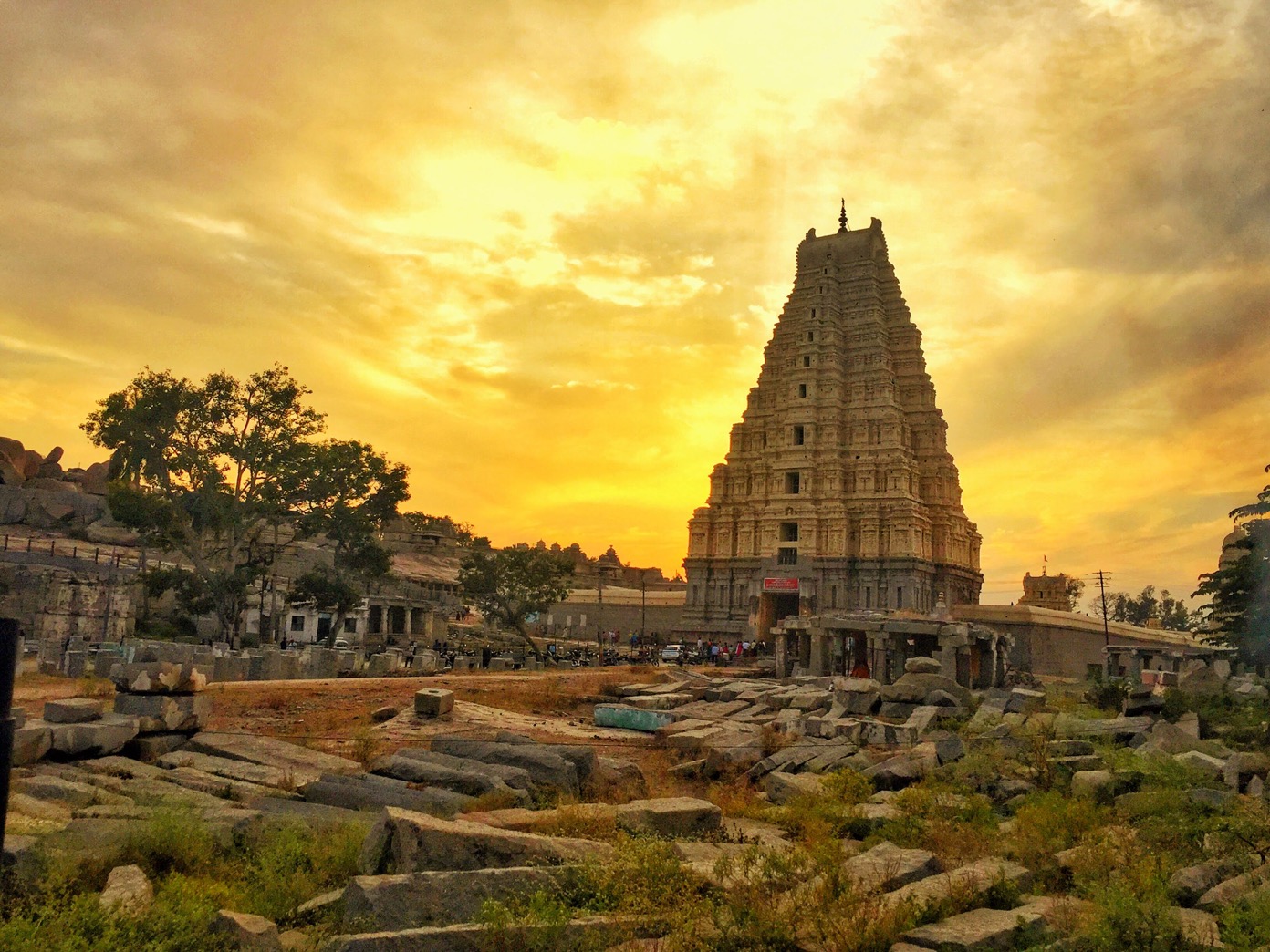
Day 2 - Hampi
The second day came pretty quickly, usual things. Getting breakfast at the same place. All prepped for the trek towards the eastern side of Hampi.
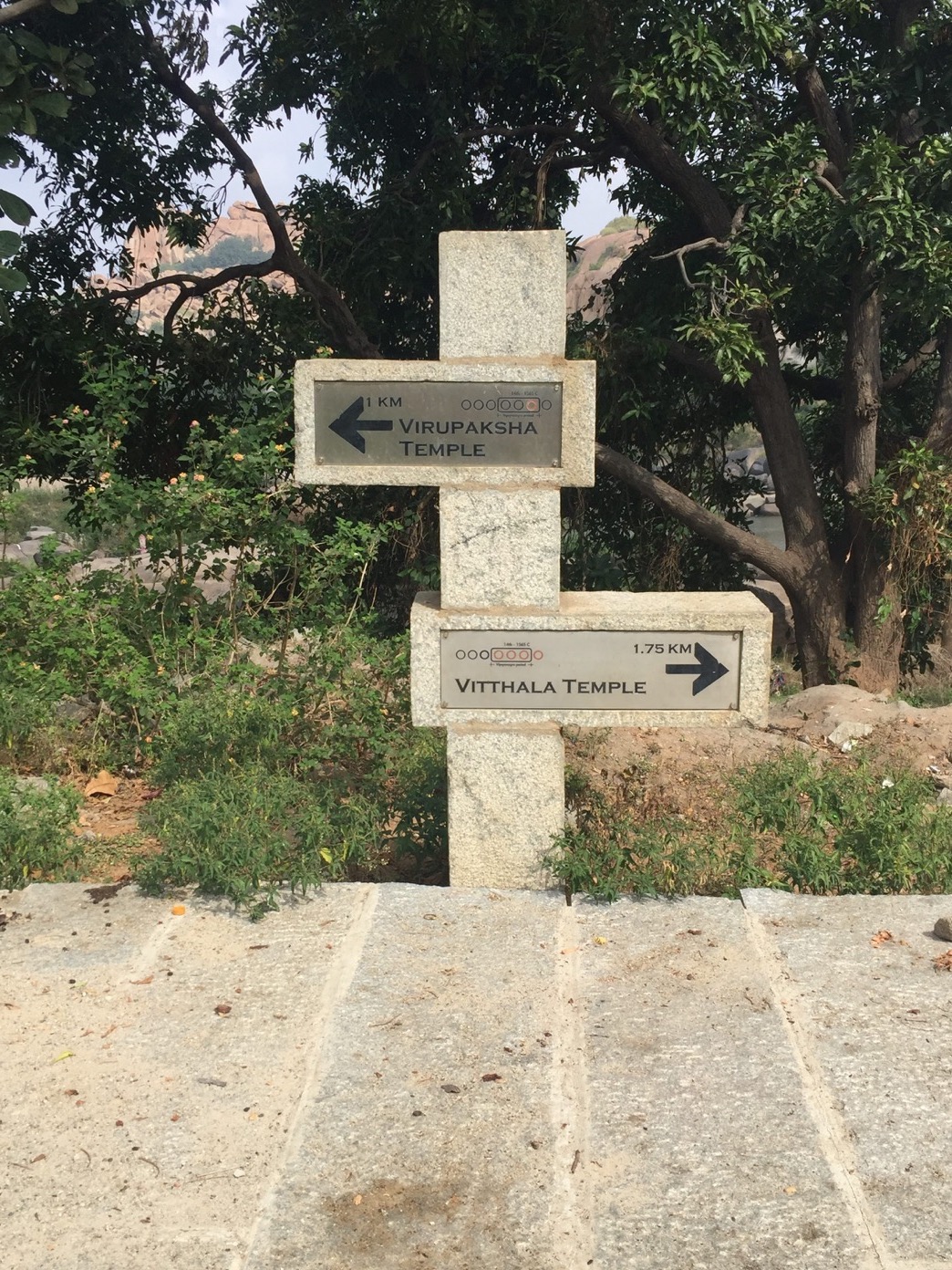
The hike was a 3 kilometre trek from my lodge, the Vitthala group of temples.
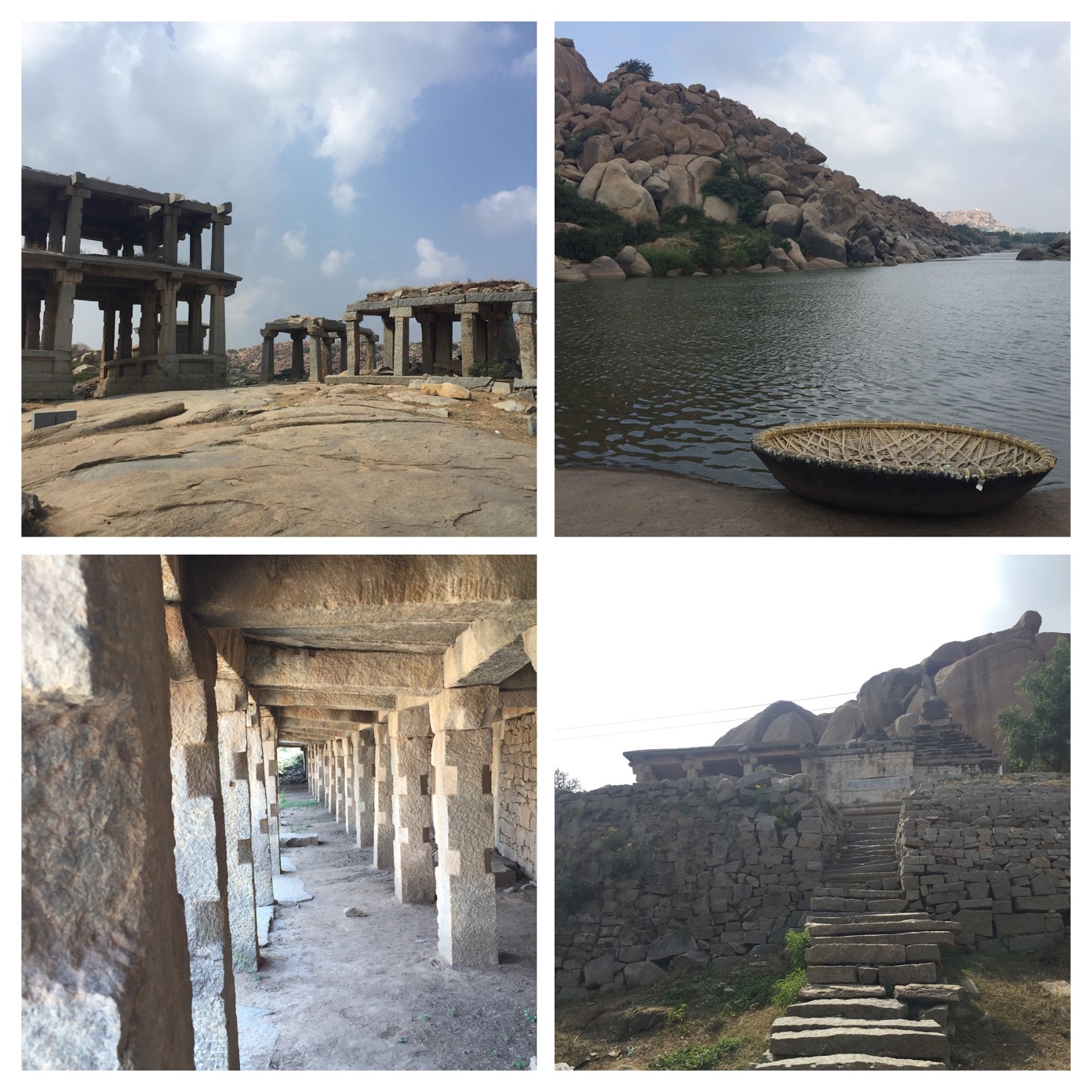
The path to the temple is not that hard IMO if you are alright with walking in the sun with little to zero presence of humans in the path under the scorching sun. You walk alongside the river banks in some parts and get to witness the ruins which were left behind when the empire had fallen.
The other way of reaching to the Vitthala temple from Virupaksha is to take a 12 km auto ride which would push you back by some 800 INR or so depending on how well you can bargain with the auto drivers.
Whichever suits you well. I wanted to take that hike as my lodge owner had mentioned it should be doable given I had lots of water.
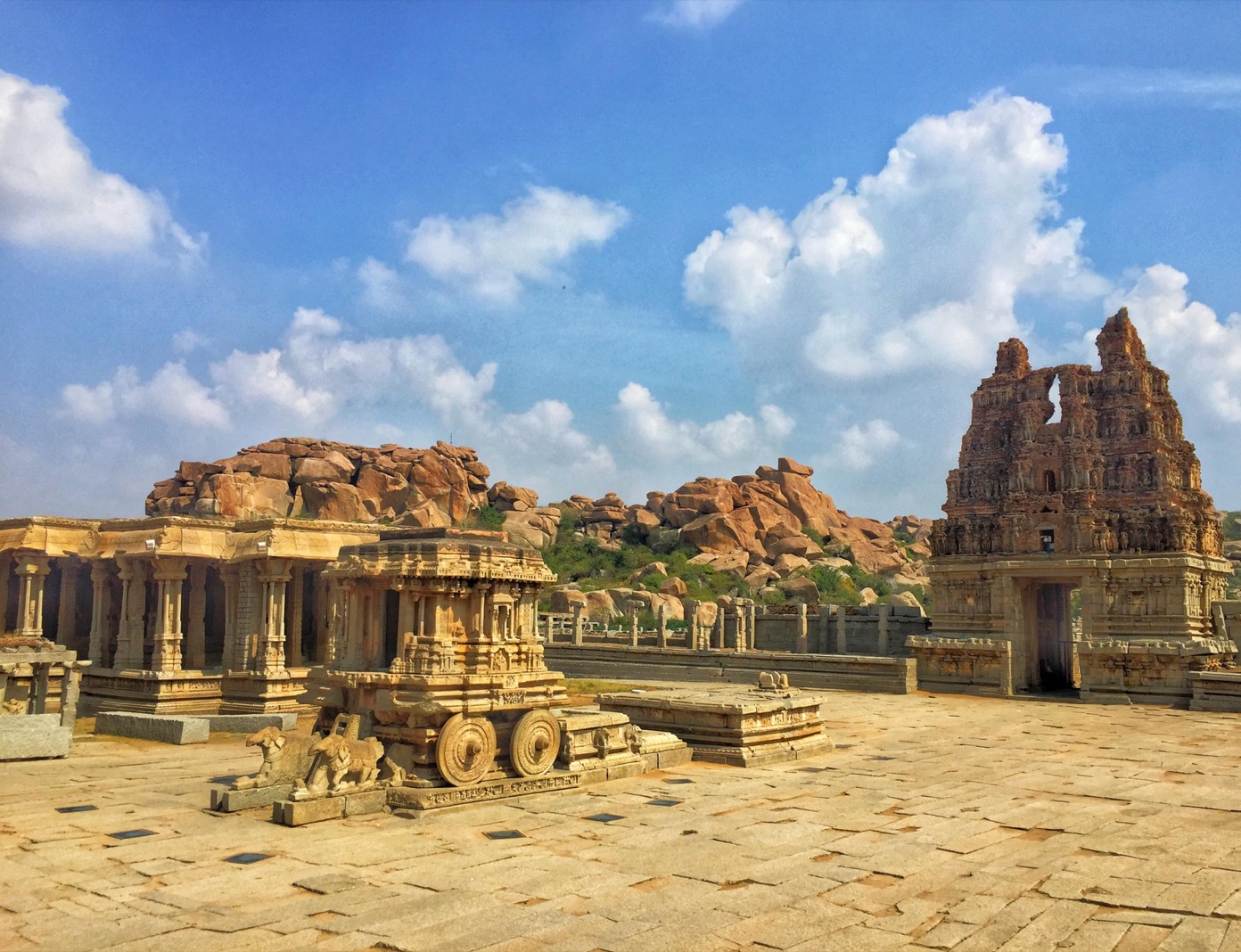
The highlight of the temple is the stone chariot, at the entrance, a reproduction of a professional wooden chariot, is perhaps the most stunning achievement, typical of the Vijayanagar period. It houses an image of Garuda, the vehicle of Lord Vishnu.
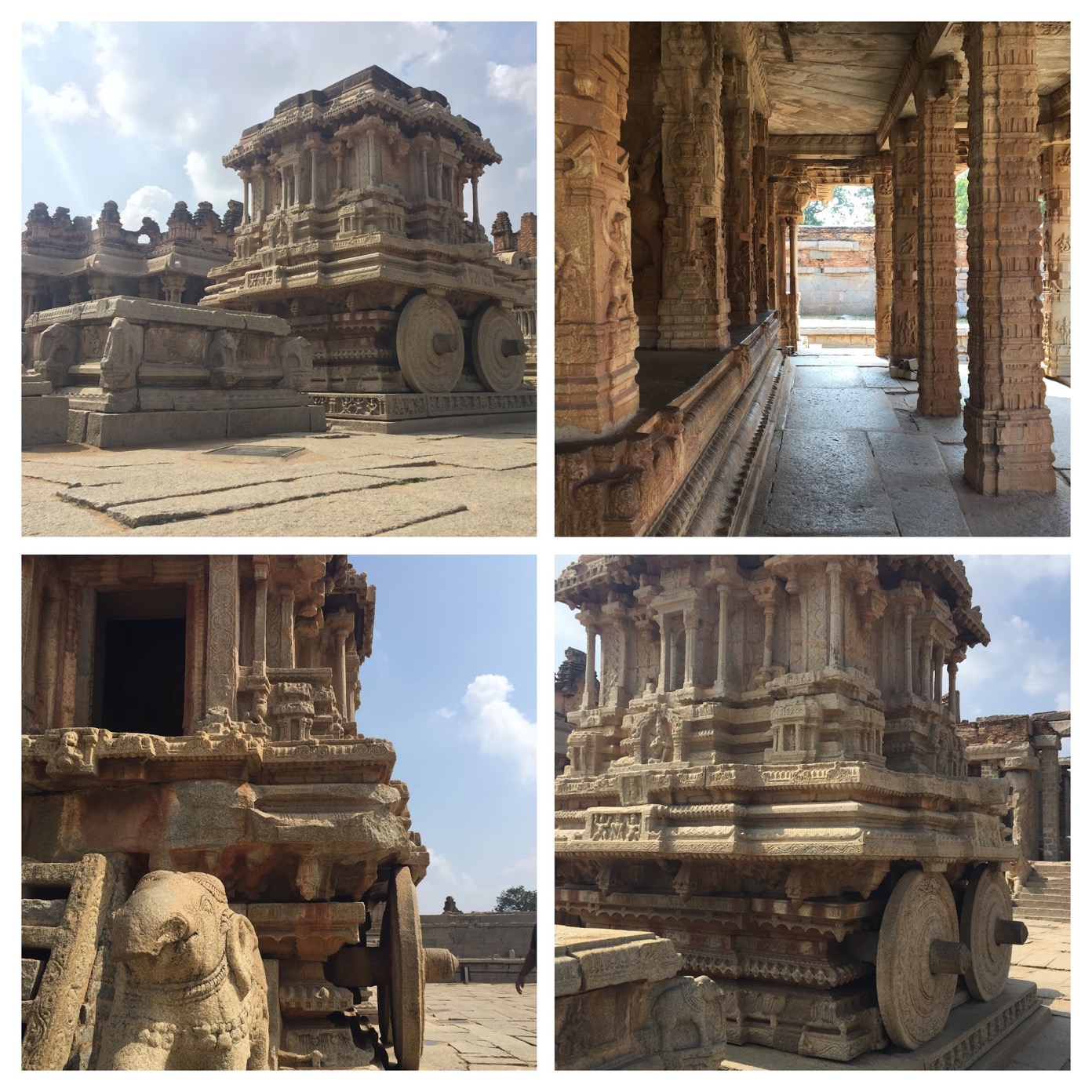
Outside the temple, to the east, is a huge bazaar, measuring 945 meters in length and 40 meters in width leading to a sacred tank known as lokapavani.
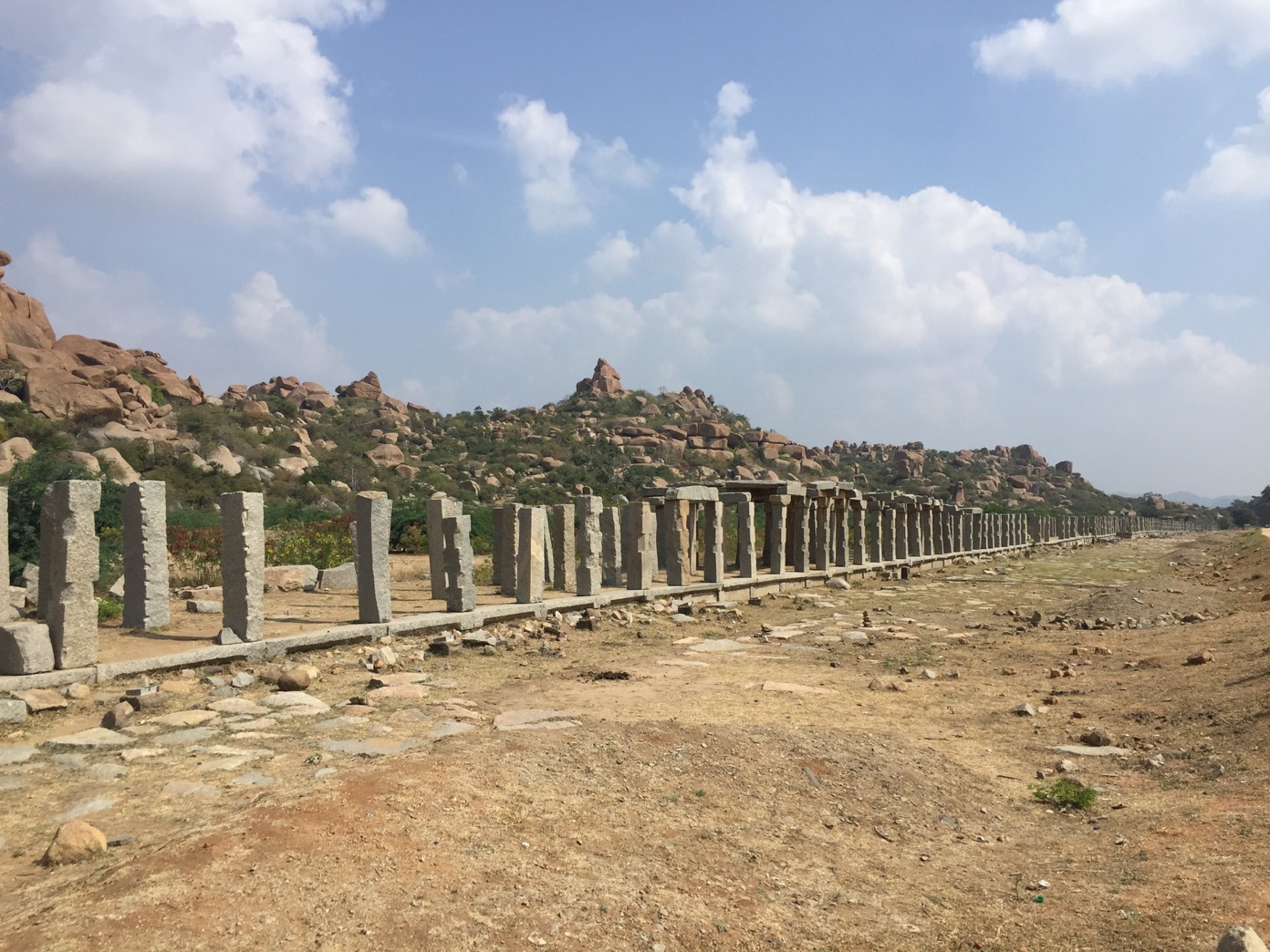
If you keep walking in that direction, you will what is called Talarigatta gate, which is located strategically to the north, north-east of the Vijayanagara city leading to the river known as ‘Talarigatta’(toll collection point). The gateway, which is narrow, is built into the fortification wall which enclosed the capital city. It’s a two-storied structure with a provision for a guard pavilion in the first storey, the latter having beautifully cut plaster decoration.
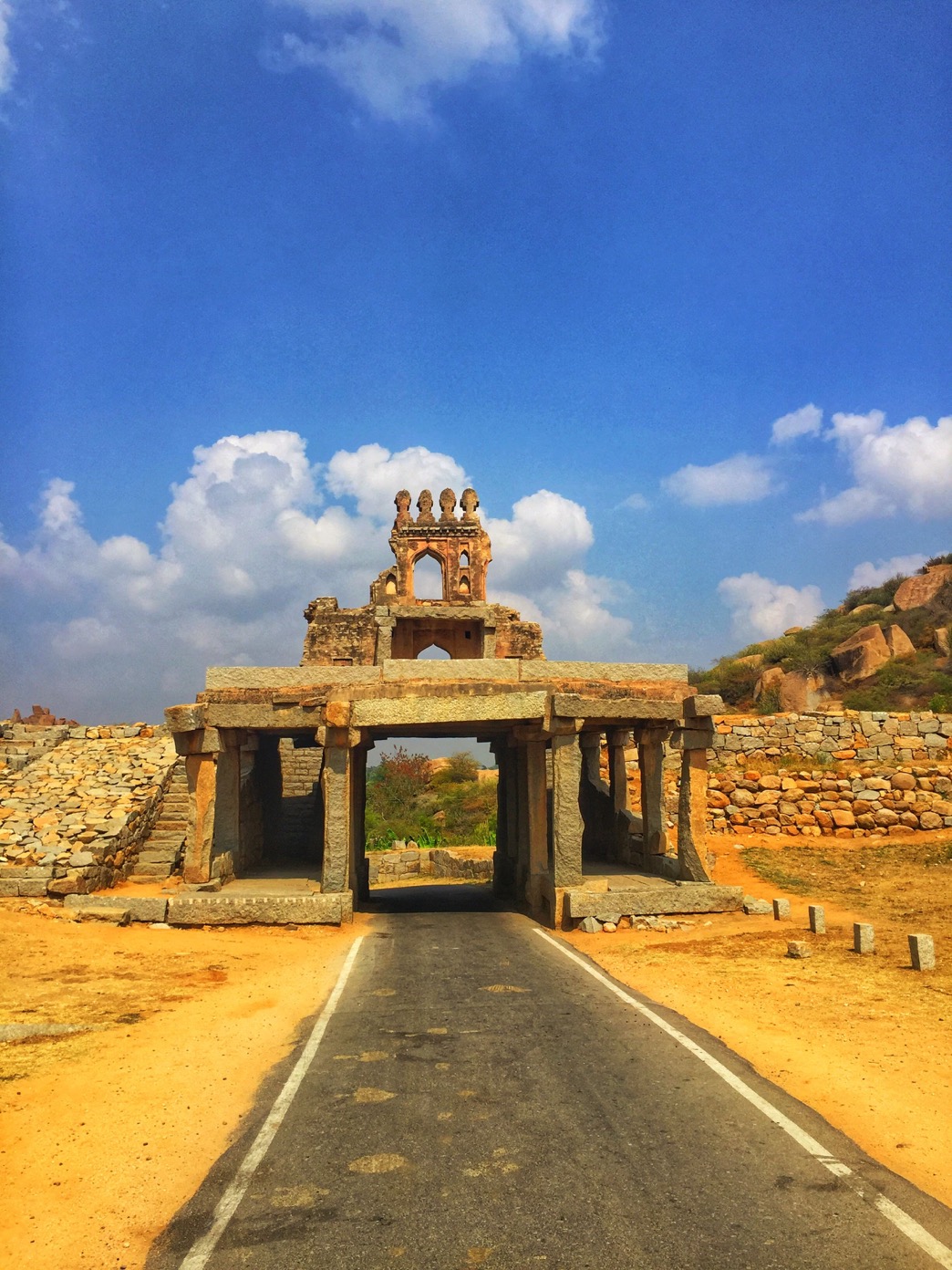
Just after that, I hitchhiked with Pasha to the nearest main road to Kamalapur, which is the nearest town coming in between Hampi and Nimbapura. Was around 4kms. Pasha has a soft drink ship right outside the Vitthala temple and was going out to deposit the empty glasses to the distributor when I met him. He has two kids, named Aminah and Aliyah whom he adored. He asked me about my family during the ride and was describing how he loved Bombay and the Haji Ali Dargah. He complained about the traffic there though.
Here’s a picture of Pasha and me, which I managed to get with him just after he dropped me.
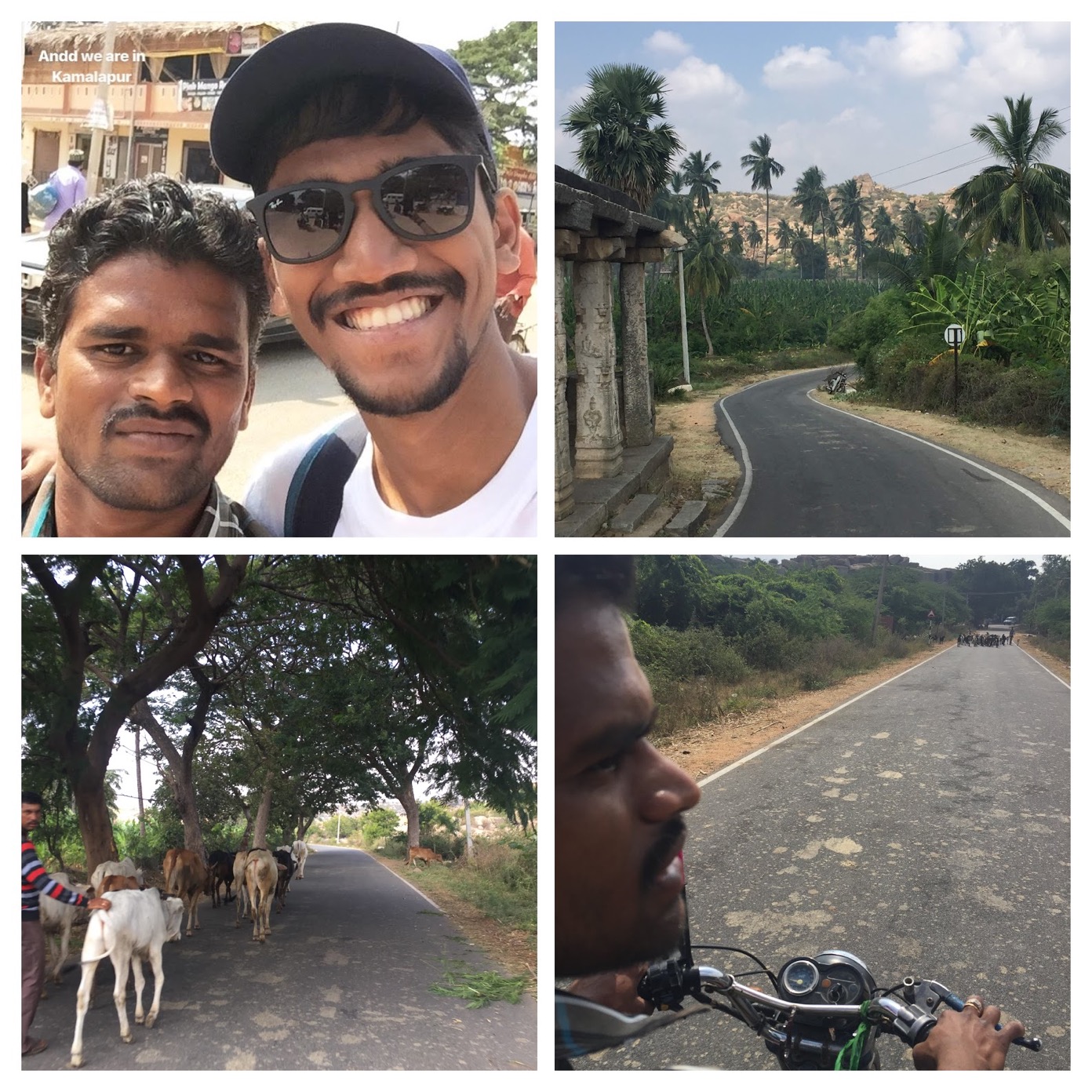
I got dropped very near to the museum, so the natural thing was to just go and visit it. It was interesting to see a lot of sculptures and old coins from the empire. And for a change, I was not out in the scorching sun.
As I was heading back to the main Hampi city, I had to find my way back. I had a few options. The easiest was to take an auto and head back to the city. Or wait for the red city bus to come along and halt there at that intersection. I waited for the bus to come and it felt like eons, but it didn’t arrive.
While I was waiting there, I met this kid called Mahadev whom I had met just yesterday when I had visited Virupaksha. He was one of the many small kids who was selling the map of Hampi in front of the temple. And I could immediately recognize him. He was waiting for the same bus as I was and he was on his way back home after a regular day at school.
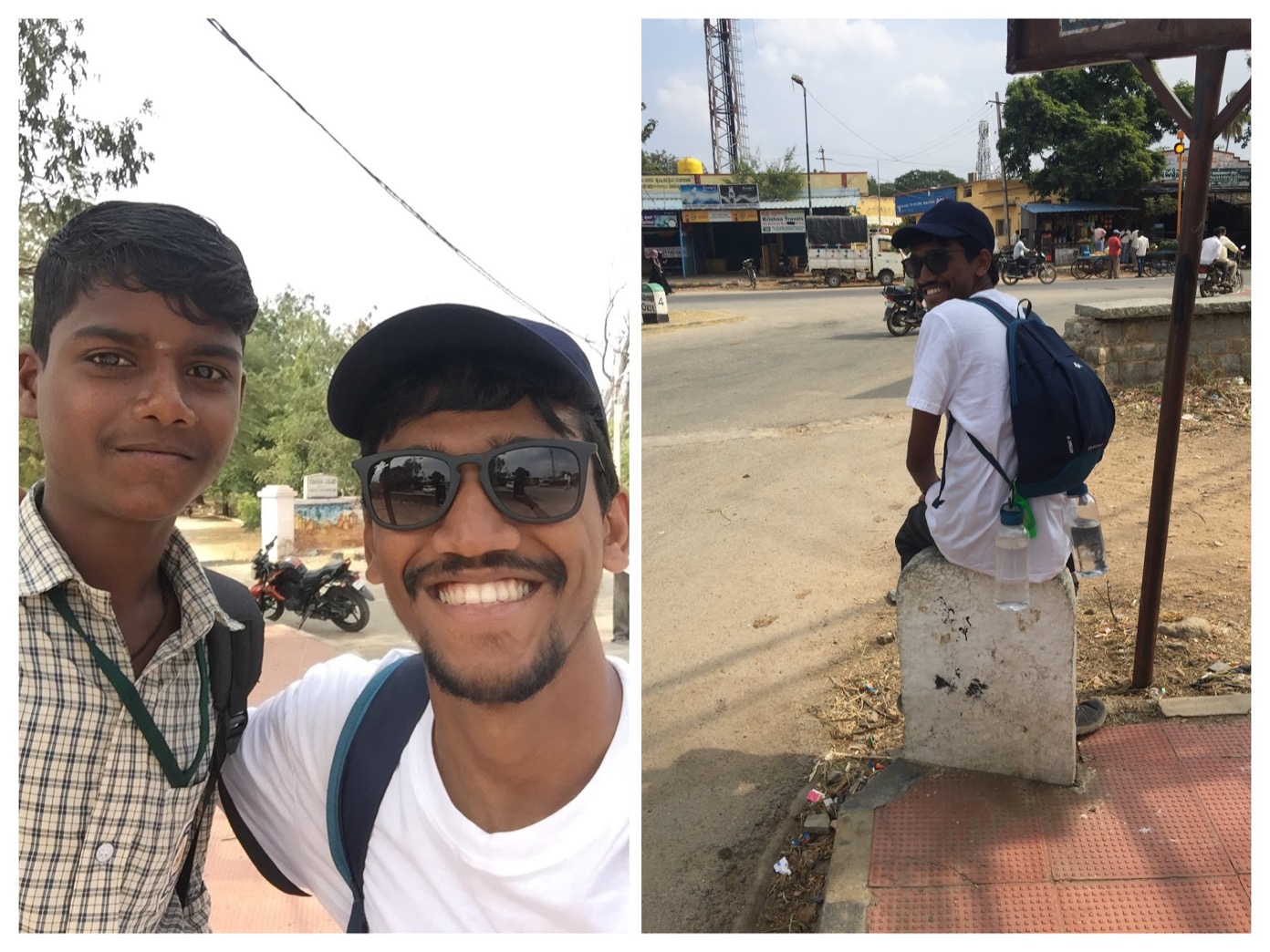
And while we waited, we talked about his family. His father was an auto driver here and his mom used to sell food at her stall near the Virupaksha temple grounds. He had an elder sister who was studying in the next town. I asked him what does he like about this place. He said. it was the people and that he liked meeting new people and getting to know them.
After waiting for a long while and both of us sharing some apples which I was carrying, Mahadev decided he would get on the back of a motorcycle and reach the town, he generously offered me his ride when a kind gentlemen offered to give him a lift, but I asked him to take the ride as I was hoping to get something similar.
As luck would have it, generous gentlemen offered me a ride back into the city. He struck up a conversation immediately after we started towards the city, asking me about where I was from and how was I liking the city.
The next thing on the list was to get on the circular boats which I saw when I hiking down the river. The owner of the boating service was quoting somewhere around 1200 INR for around an hour. I managed to bring it down to some 400INR after a lot of cajoling.
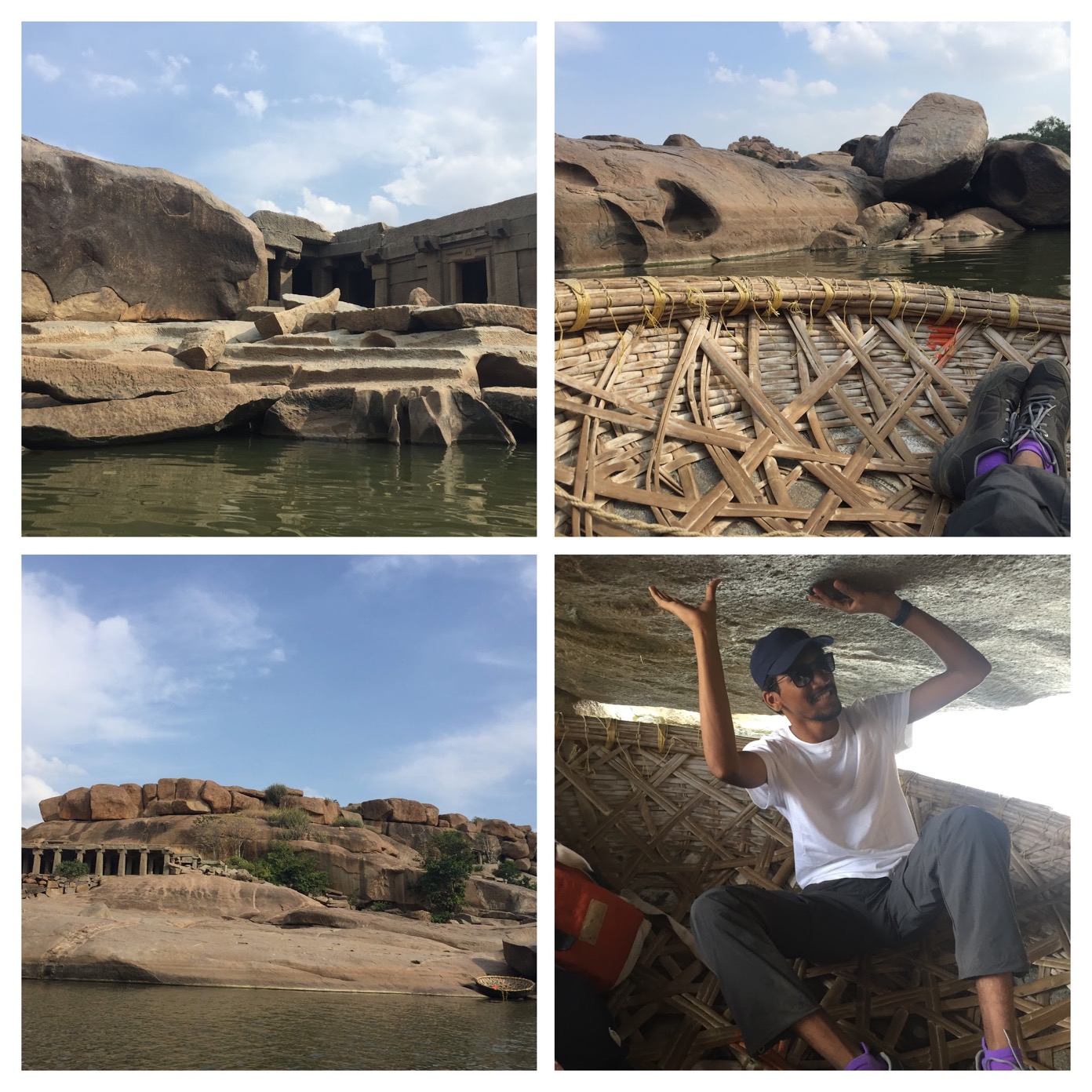
Later that night, I was lazing around the same local tea shop where I used to hang around. I ended up eating at the same place. Took a bus back to Hospet after which I had to get on a bus from Hospet on to my next destination.
Another uncomfortable bus ride
The bus ride to Gokarna was not exactly the best ride, but it was pretty cheap. I was travelling in the state bus again, no surprises here that I couldn’t get any sleep again.
I met Yang, yet again while on my way to Gokarna. And we had a chat again about where we were headed and what are we gonna do next.
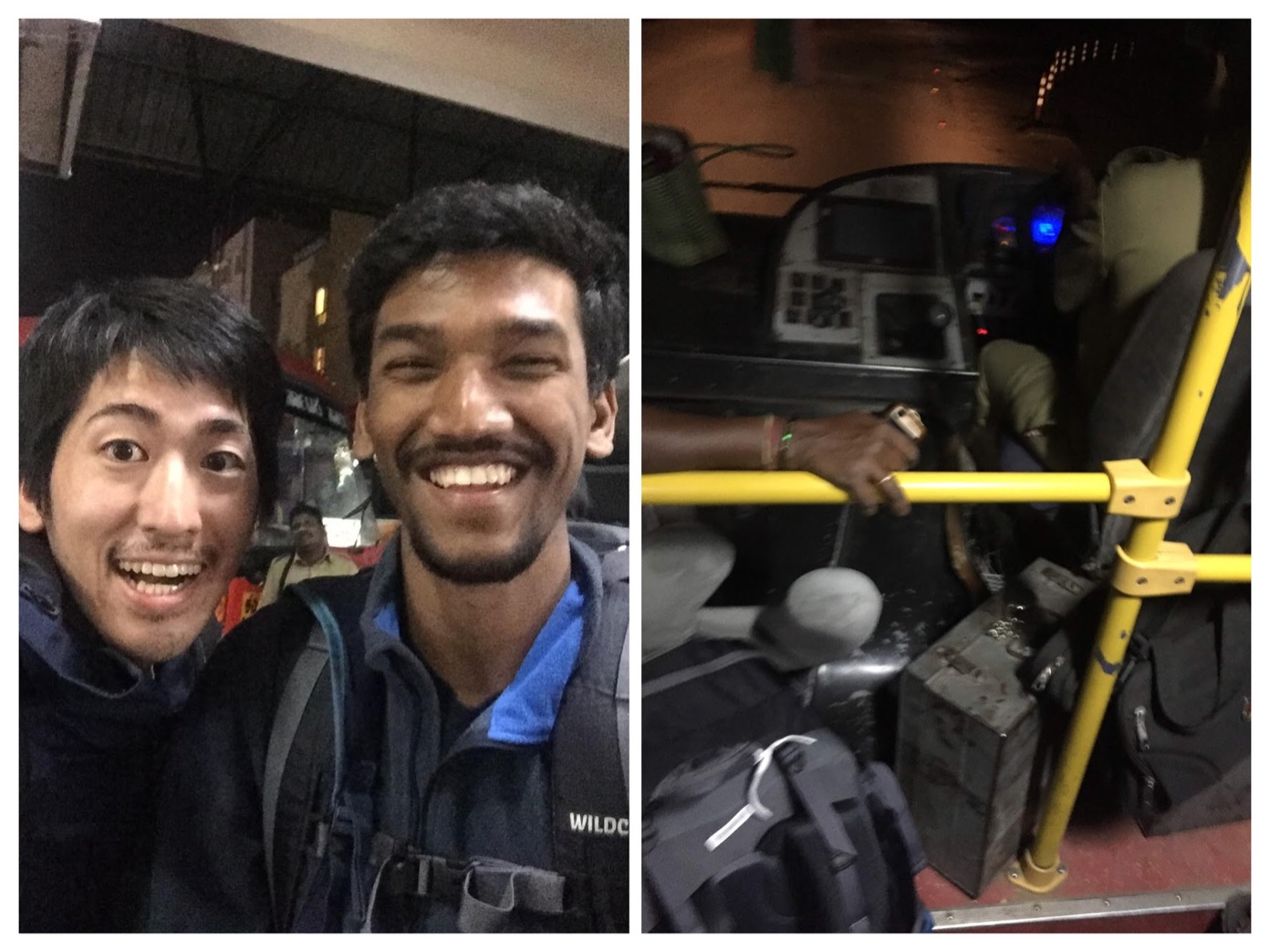
The trip to Gokarna from Hampi is an overnight one and when I woke up to the morning, I was pleasantly surprised by the gentle breeze on my face flowing in through the tiny crevice of the window which slid open as the bus crawled through the bridge.
I got down at the Gokarna city bus stand and decided to walk all the way up to the hostel which I had booked for the stay for one night. It was a kilometre of a hike before I could reach my hostel.
I was welcomed by the hosts back at the hostel and the hostel was right next to the ridge where you could have a clear view of the main beach and the view was absolutely gorgeous!
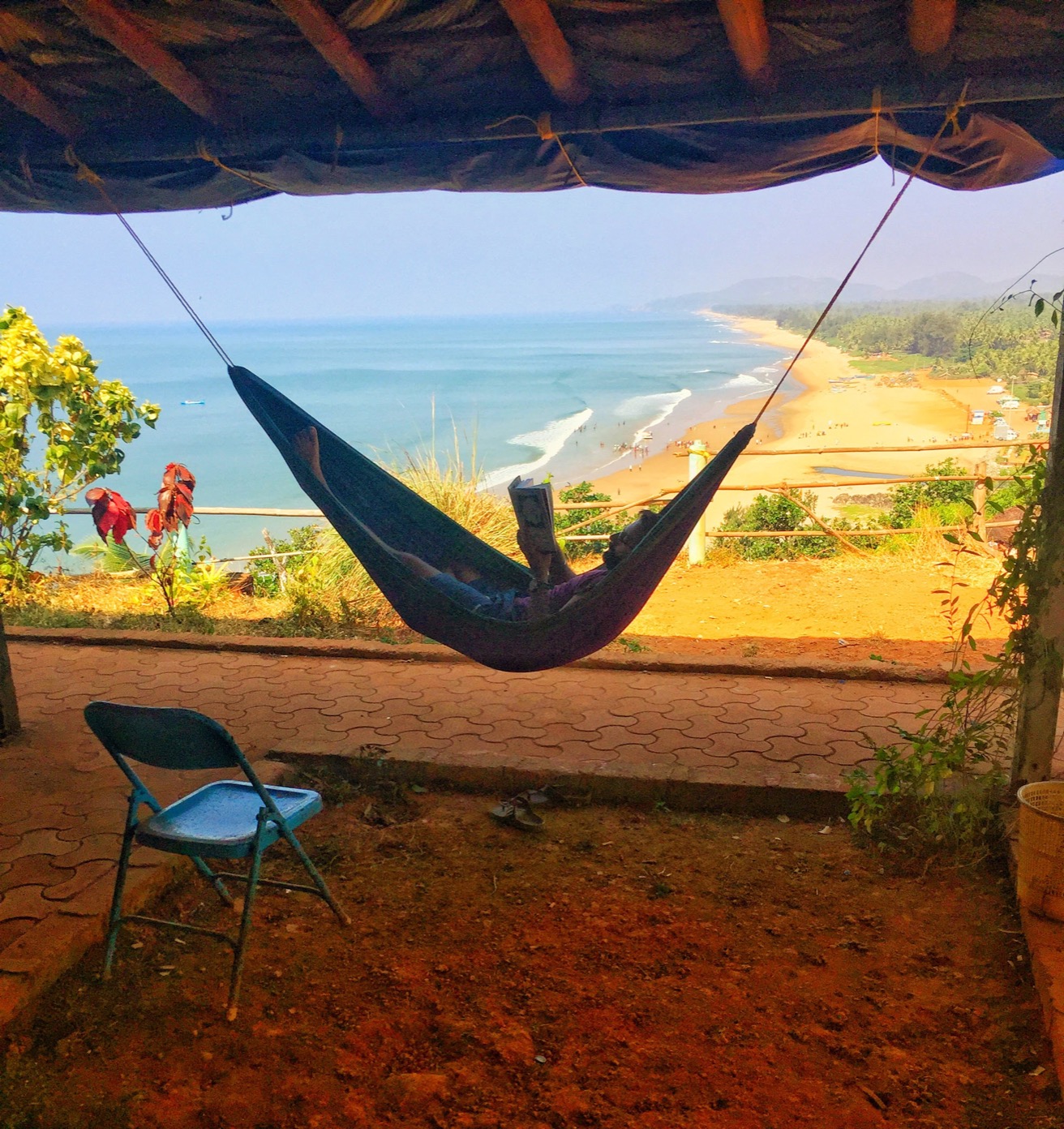
The bunk bed which I was sharing along, had folks who were there for a quick getaway before they attended a friend’s wedding, an army officer who was on her way back home before she got to go back to Leh where she was commissioned, I met Amazon, who was from Sussex and who was on a break before he headed back home and joined his new gig, along with Michael who worked as a Police officer in Australia.
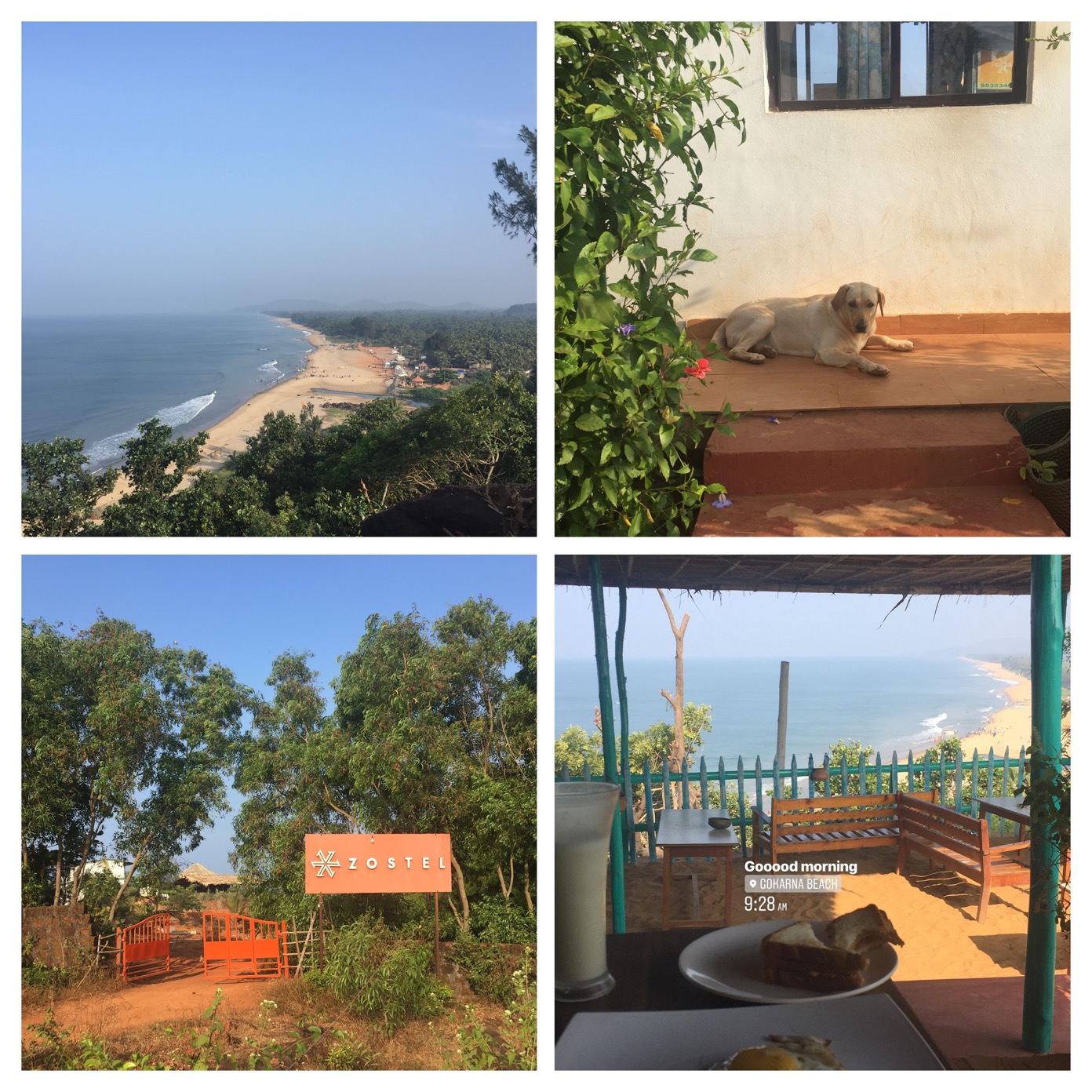
I lazed around the dining area of the hostel which was right next to the ridge, where I and a couple of folks were just sharing with each other where they had been travelling around and singing songs while someone played some guitar sipping over some milkshake.
The afternoon was sliding over and we started to plan around a hike around the beaches of Gokarna.
We made it down from the hills from where the hostel was situated and headed to the main beach, where we boarded onto the speed boat which was waiting for us to take us to God’s own beach.

The boat ride was roughly a 30-minute ride till we reached the destination and we were greeted with occasional dolphins who would swim right next to us and come out of the water every now and then.
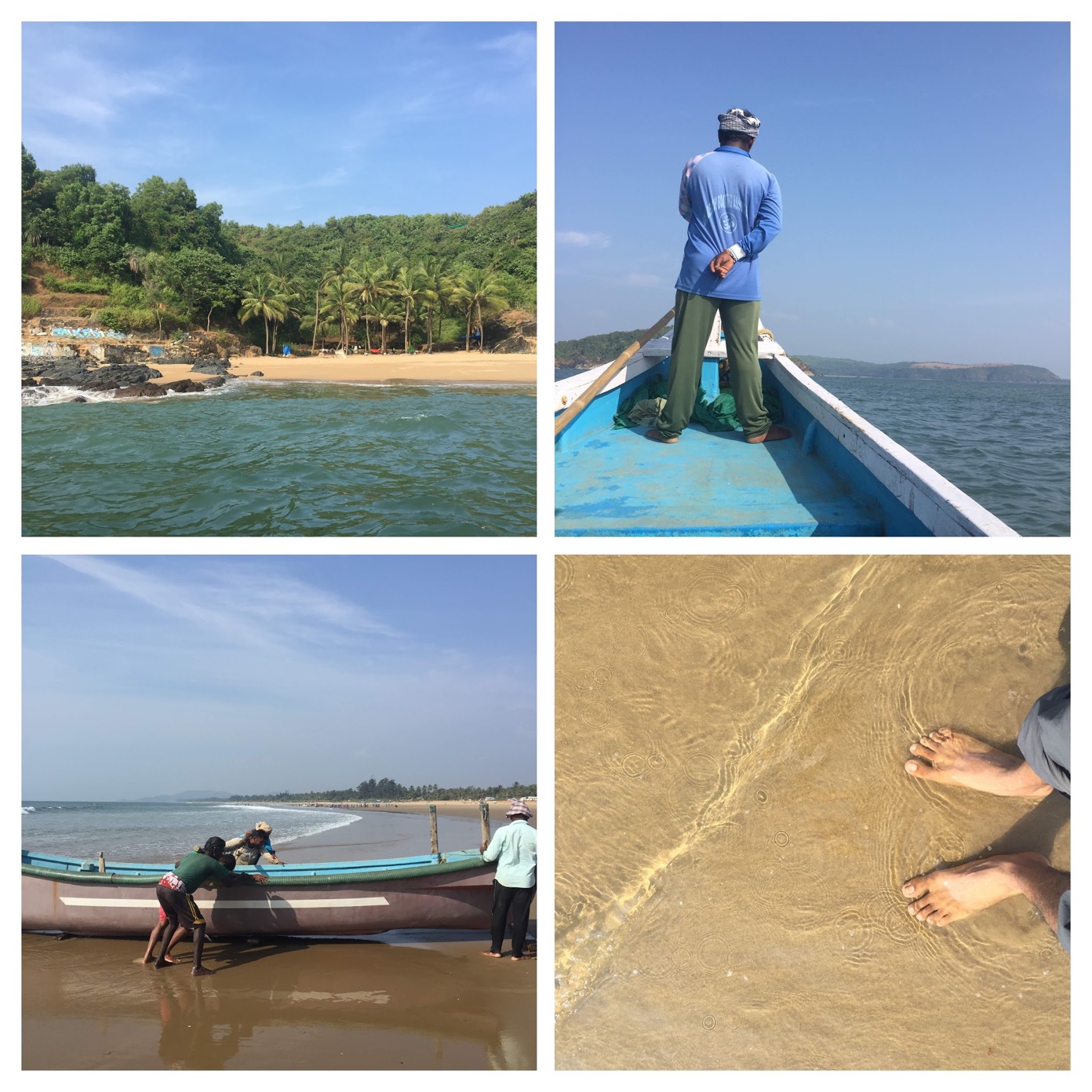
Just after you get down at any of the beaches which are farther away from the main roads, you would find a bunch of folks who would have holed up in makeshift tents, playing soccer, cooking food in the open kitchen which they have created. Most of them being from Israel.
We started our trek to the beach right next to God’s own beach and the beaches along the way, all the way to the main Gokarna beach.
Kudle Beach is popular with those that are staying in town but want to spend the day at the beach. At the left end of the Gokarna beach, a narrow path goes up a hill, where you cross a (Rama) temple en route. This temple also has a natural water spring which according to the locals never stops running. The water is quite drinkable. After climbing up some stairs, you will find flat ground and some breath-taking views of Gokarna beach as you turn around to see the distance you covered. As you move along, about 10 minutes walk from this place, the flat ground leads to a narrow lane, which goes down to Kudle beach, the second of Gokarna’s beaches. This beach looks very unkempt, desolate and dirty in off-seasons. You will hardly find a soul here then.
One of the beaches which we crossed was called the Om beach, it gets its name from the fact that, if you standing at the ridge. Just before Om beach. You can actually see the shape of Om being formed by the beach. On the way, we crossed the famous Namaste cafe and some others which had cropped up.
At the end of the Om beach, there is a path going up the hill. Here one has to get around a hillock(about 20-minutes walk) to reach Half-Moon beach. take this trail, and when you reach a fork in the trail, take a right for the coast route, and left for the forest route. They will both take you to the same place. Half-moon beach is so named because the shape resembles that of a half-moon.
At the end of the Half-moon Beach, a small trail leads to Paradise beach, also known as Full-moon Beach. It’s around 20 minutes walk from Half-moon Beach. The thing to remember here is after crossing the first set of rocks, one should not try to climb the hill. Rather try getting around the hill. Its a much easier climb. The steep climb up the hill will take you to the next village, Bellekan. This is the last of the Gokarna beaches.
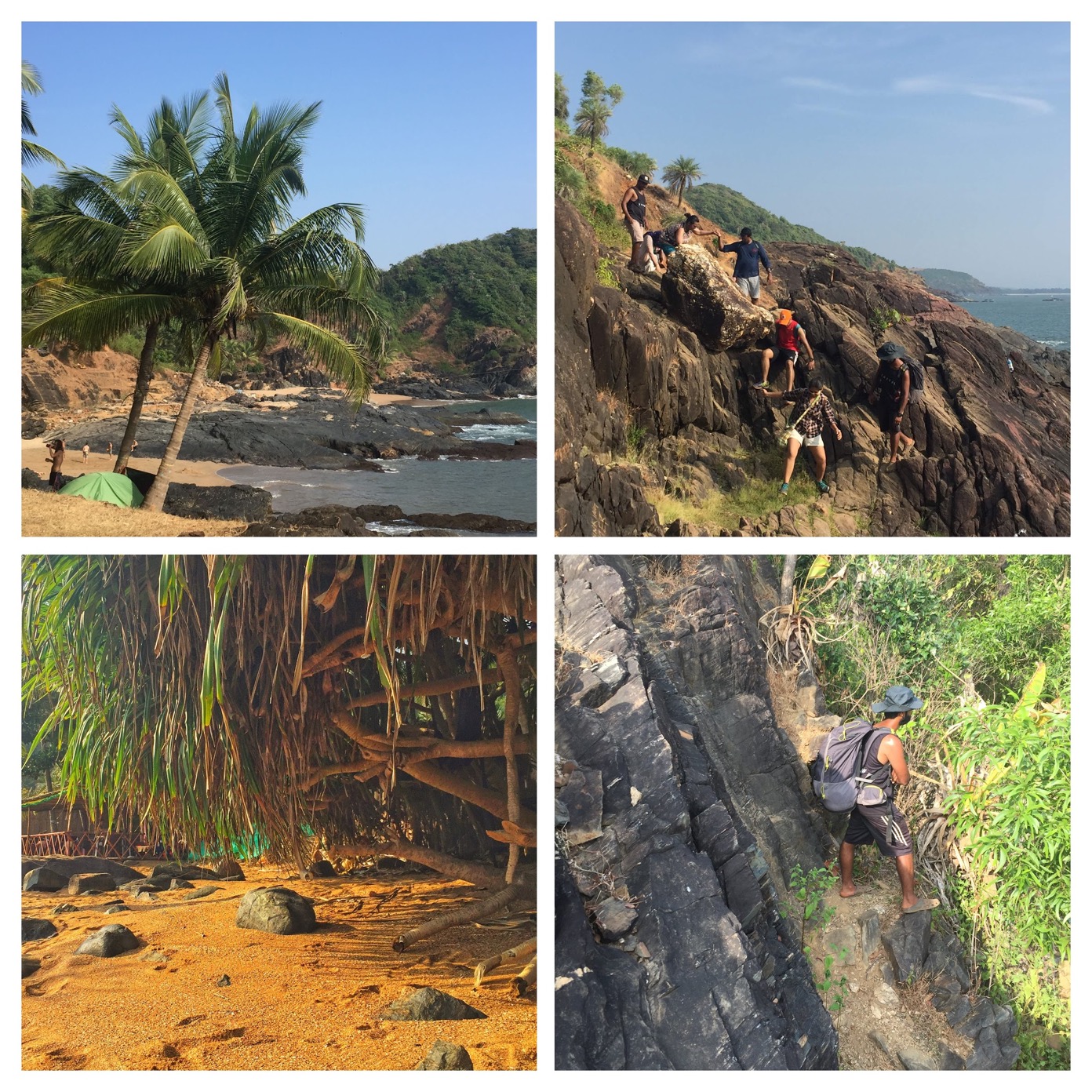
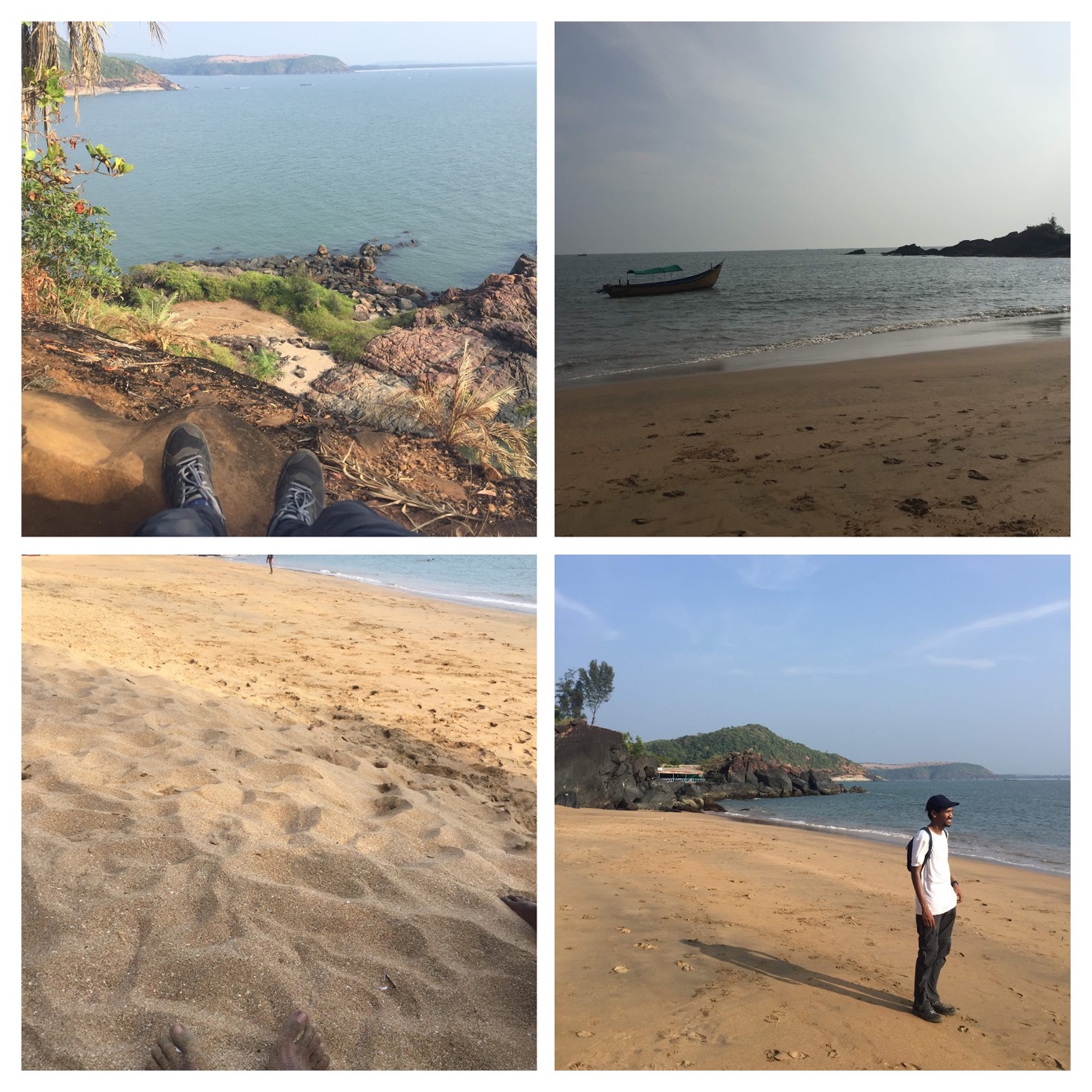
Gokarna is a place where a lot of foreigners come during their season time. By season time, they mean when it’s too cold out there back in their home countries. I met this couple from Russia and how they used to come here every winter.
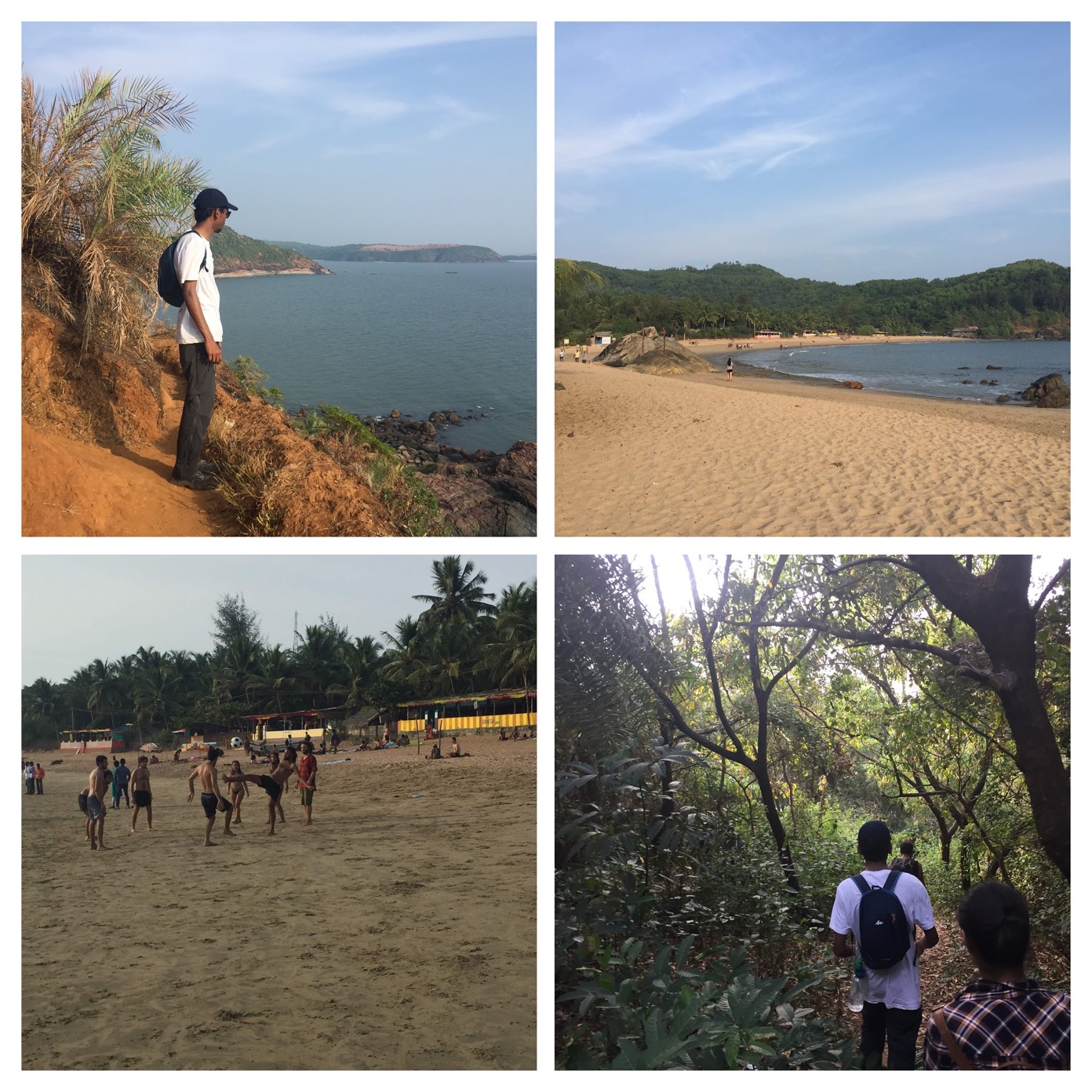

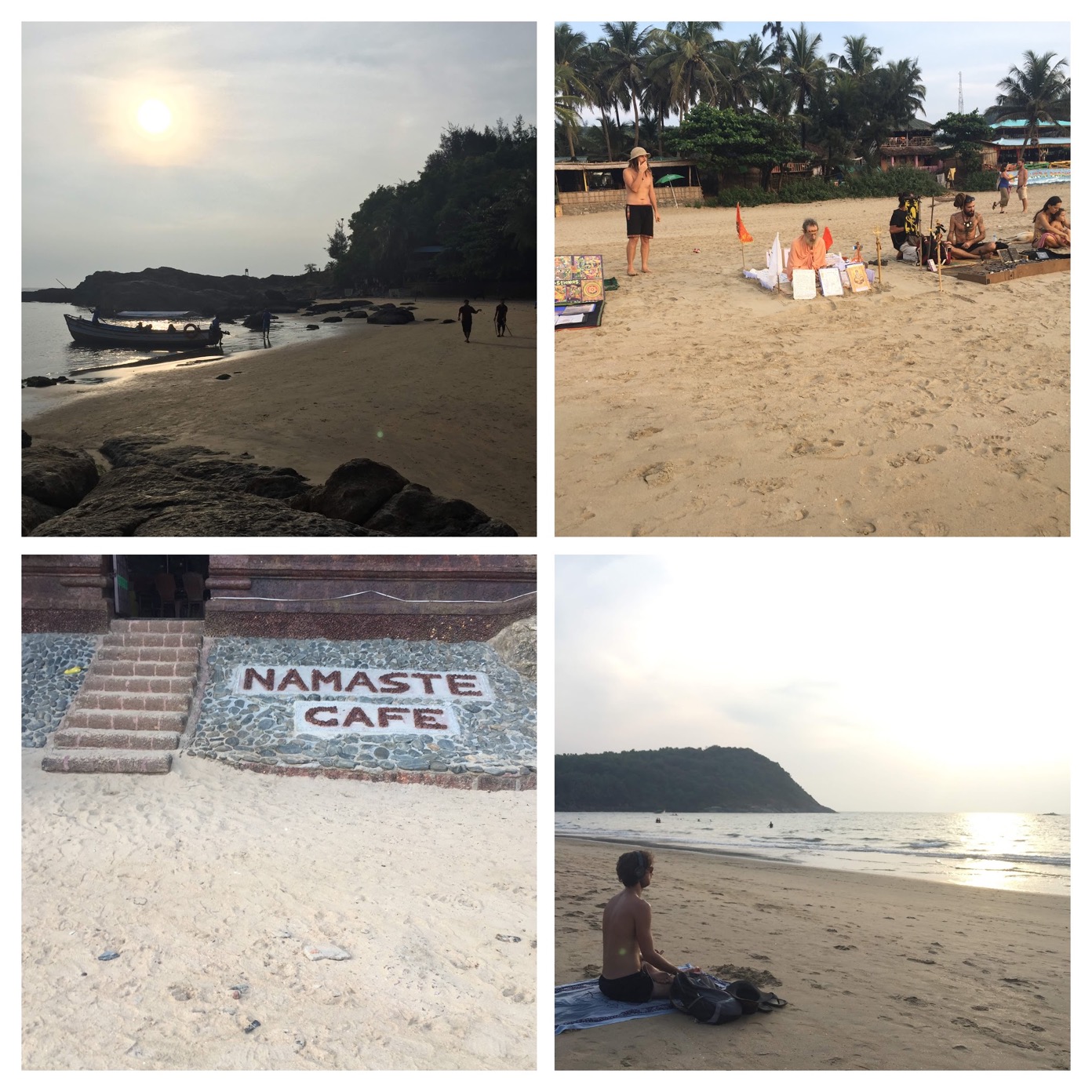
By the time we reached, the hilltop of the main Gokarna beach, it was already time for sunset. And I swear, it has been one of the most alluring sunsets I have witnessed in my life so far!
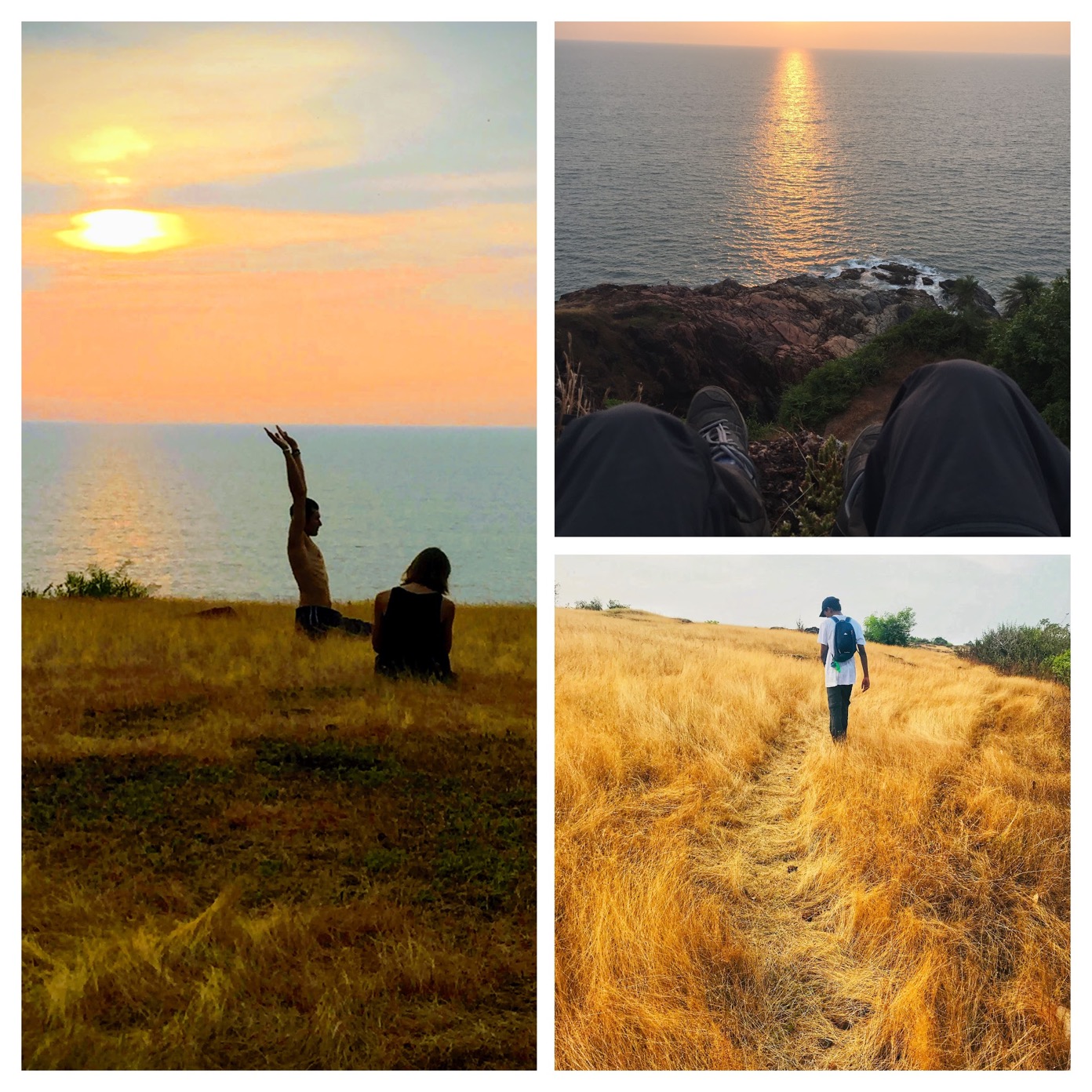
We could see, the sun getting gobbled up by the sea. The orange it was, shining bright. Spreading joy and heat, there were a few folks who were meditating, someone was drawing something and busy scribbling something on their scratch pad and here I was looking at the distant sea blankly. Just doing nothing but staring at it. I still remember that moment as I write this down.
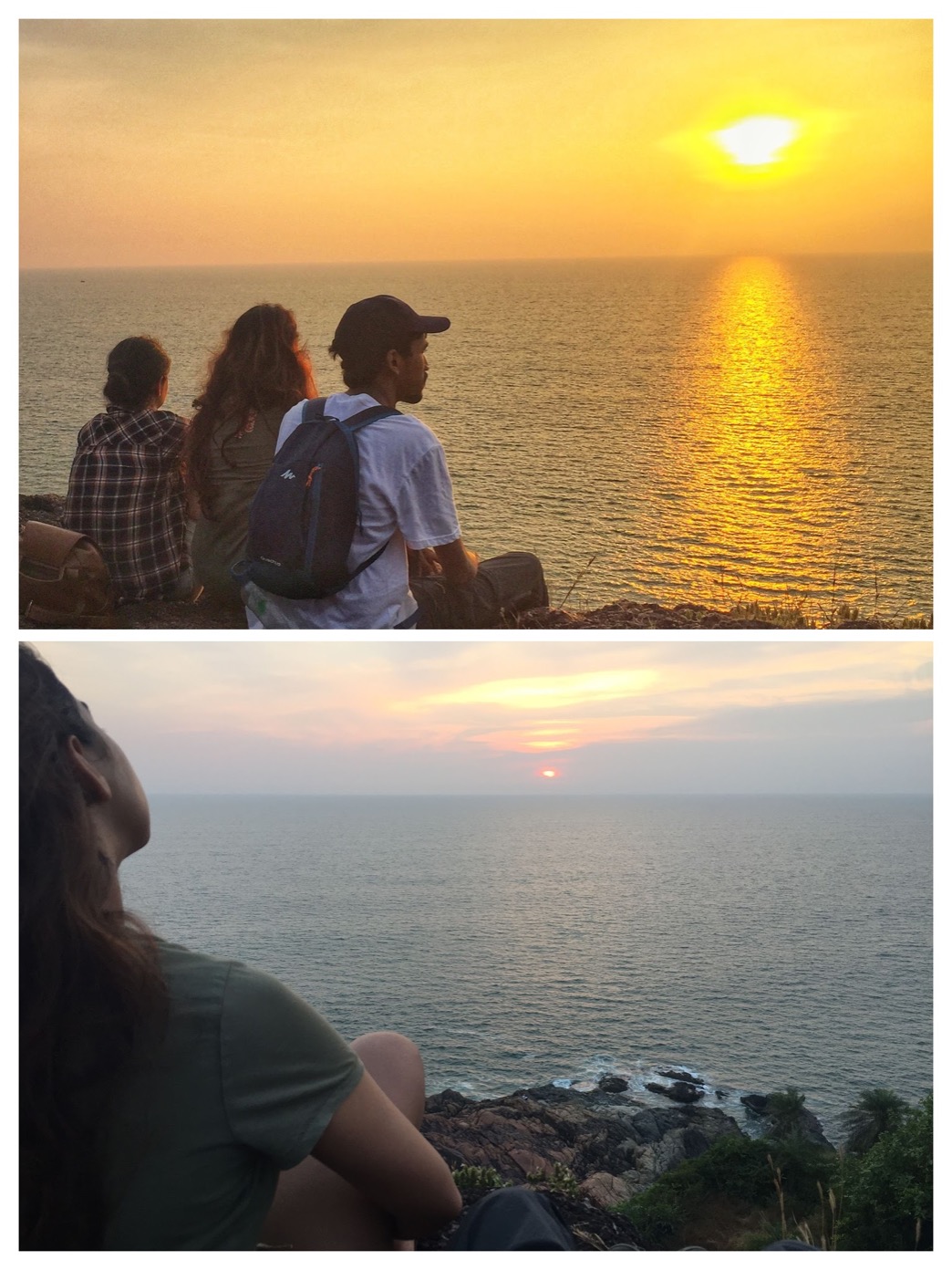
To be honest, I didn’t want the sunset to end and wanted it to just continue the whole day. And all of us just sitting there till we got the view till our heart’s content.
We headed back to the hostel to get a quick shower after which we got some dinner at a local restaurant which was serving konkani cuisine.
Just after the dinner, we got to know about the festival which was happening at the Kotitheertha temple tank in the centre of the town and this whole section of the town was lit up with diyas and lights. Everyone was out on the streets trying to get a glimpse of the festival.

The day ended with all of us crashing in our bunk beds, for me it was also the last night in Gokarna as I packed up my bags.
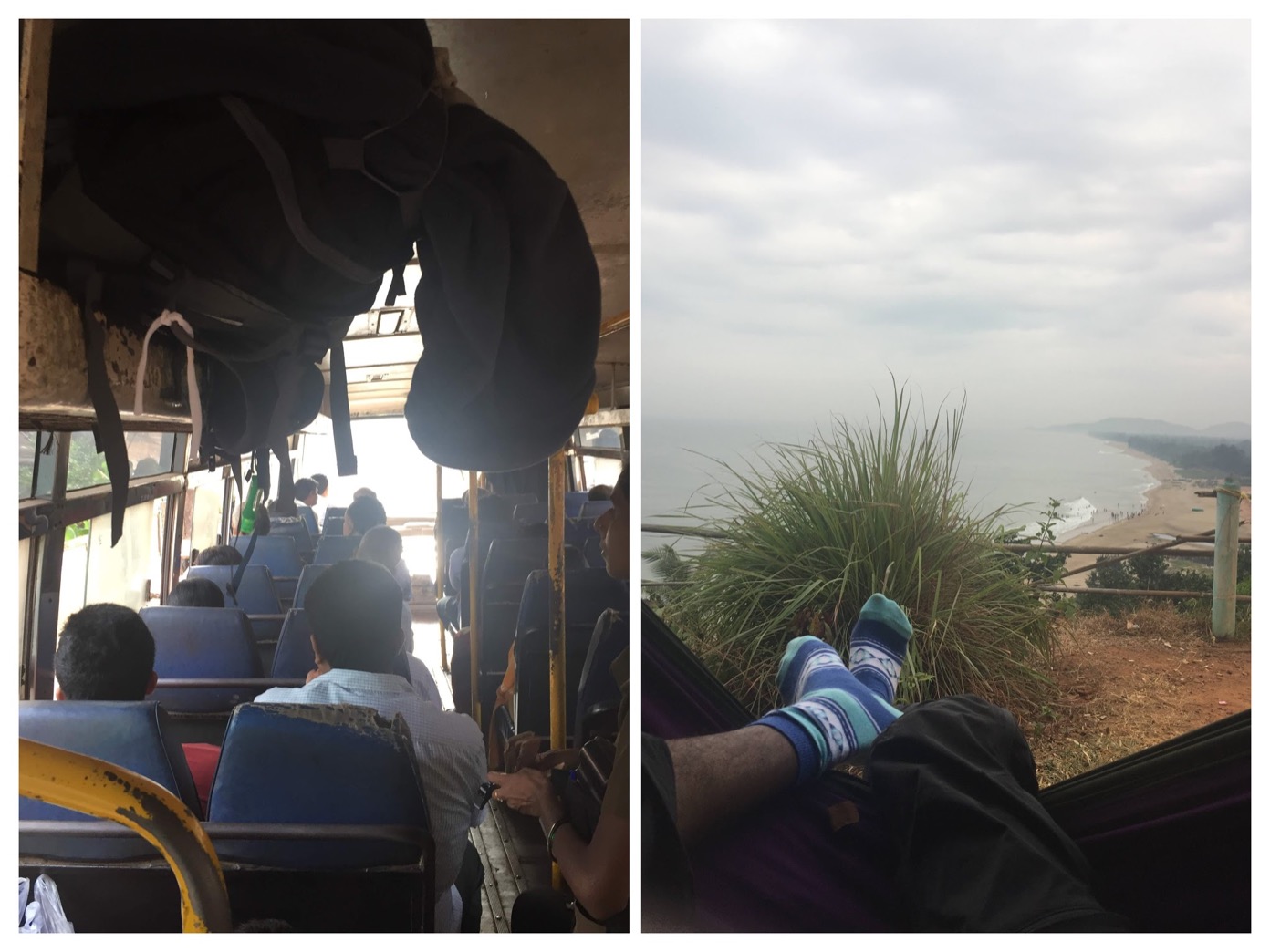
Morning came in quick and I had to rush to the local bus stop, to grab a bus to Gokarna beach railway station. And I thought I just cut it in time for the local train station where I was to board the train to my next stop.
Next stop the historic city of Margao, Goa
The train journey was joined by Michael, whom I had met back in the hostel where I was staying over. The train ride there was a meagre 30 INR and it would take roughly 3 hours to reach the destination.
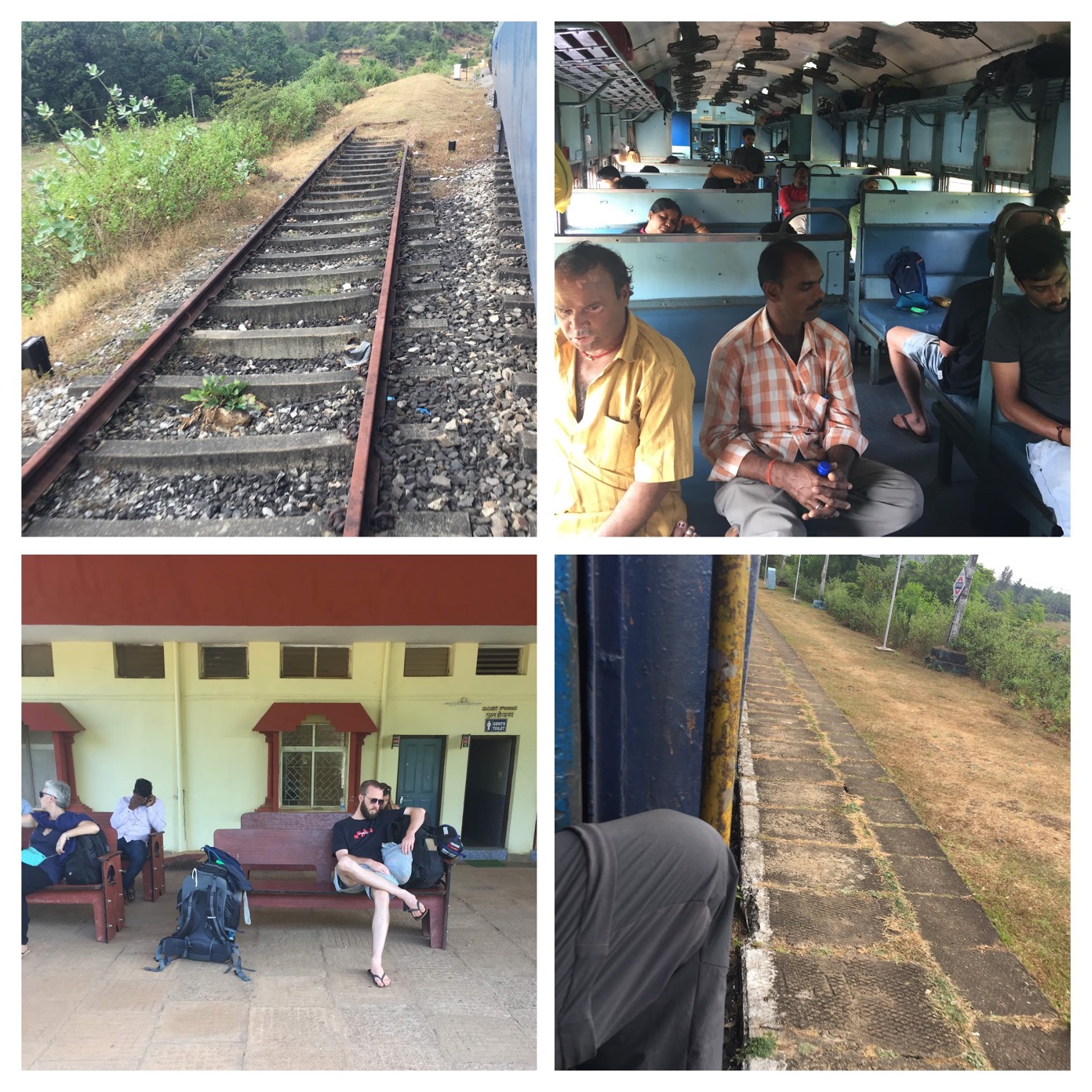
After reaching Panjim, which was the last stop of the train. I and Michael parted ways as he was headed further north of Candolim, which was where I was going.
Local transport is a little bit hard to find in Goa is what I noticed, most tourists either rent a car or a scooter and you can do the whole city in that. But many are left with the option of going around with the other options.
I reached my hostel and freshened up a bit before heading straight to the beach right behind my hostel, it was a meagre 5-minute walk back to the beach and I was greeted by quite an old restaurant called Mama Cecilia’s shack. Ordered some shrimps and just sat down on the beachside chairs to relax and watch the sunset while dogs were running around in the water, playing with their owners and people jogging.
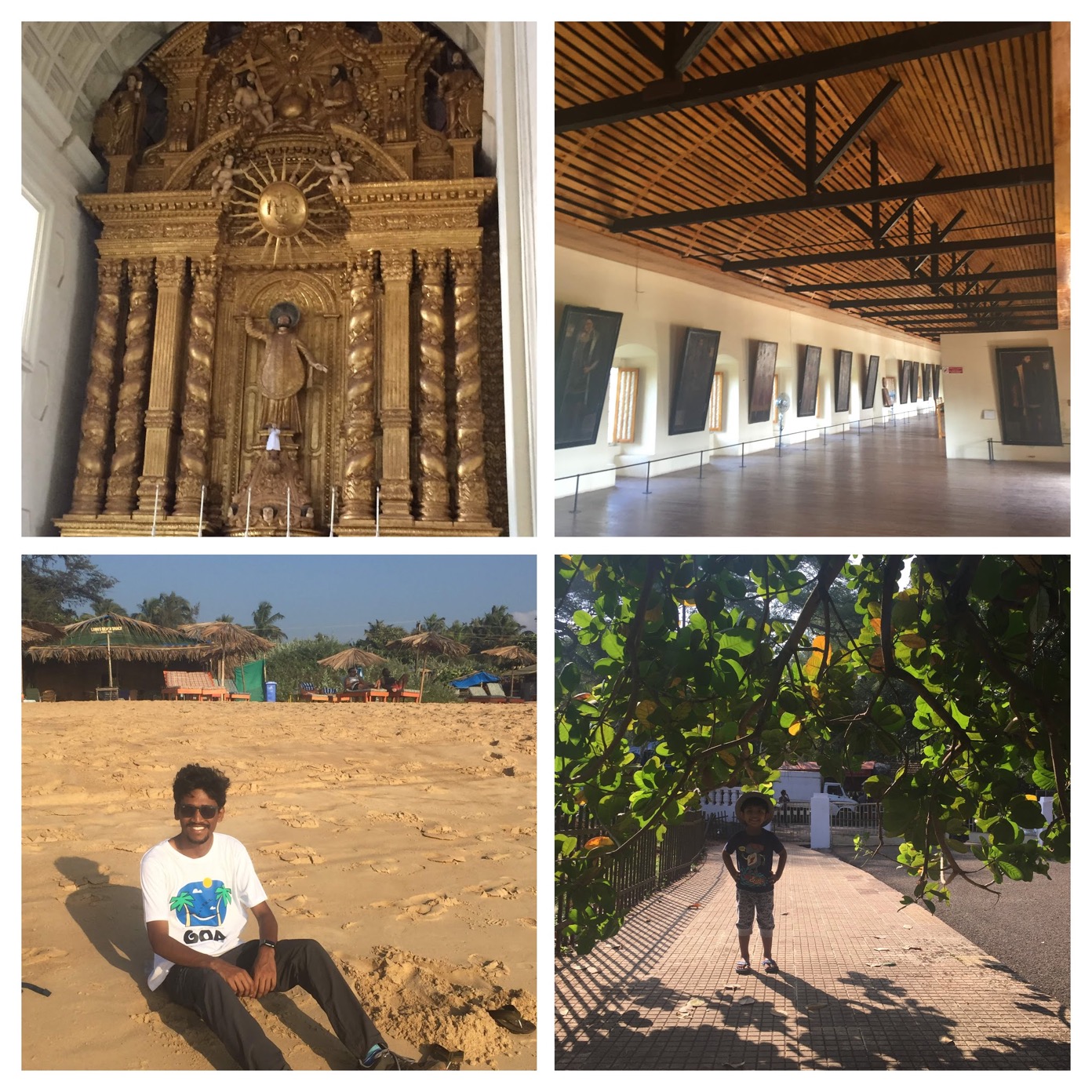
Candolim beach is another relatively busy soft sandy beach that due to erosion can be narrow in some places. Hawkers selling mostly cheap clothes and along with masseurs offering massages makes the beach a lively spot. A polite but firm no always works ~ though these people can be very interesting to talk to.
Hands down, the best restaurant in Candolim is After 7. Great selection of food and wine (mainly European) served in a beautiful garden. Great service, very romantic. The chap that owns the place ‘Leo’, super friendly, and very passionate about his restaurant. Opp Pedro Martina Resort, 1/274b, Gaura Vaddo.
Candolim itself is a small (but populated) village and it can be covered by a brief walk in 20 mins. Walking or bicycling along roads is not a great pleasure as its crowded with cars, extremely noisy and dusty. Proper walking passes yet to come.
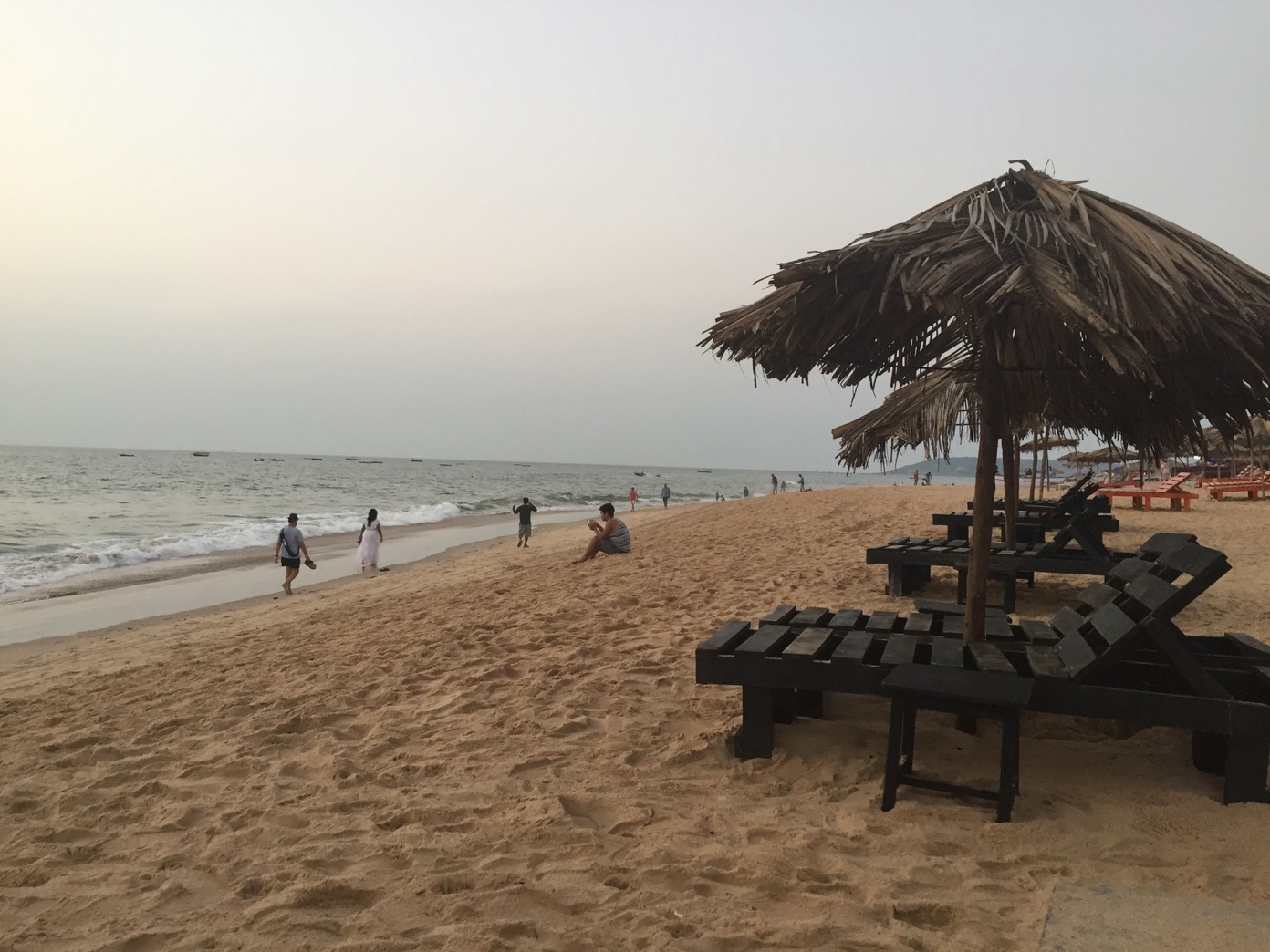
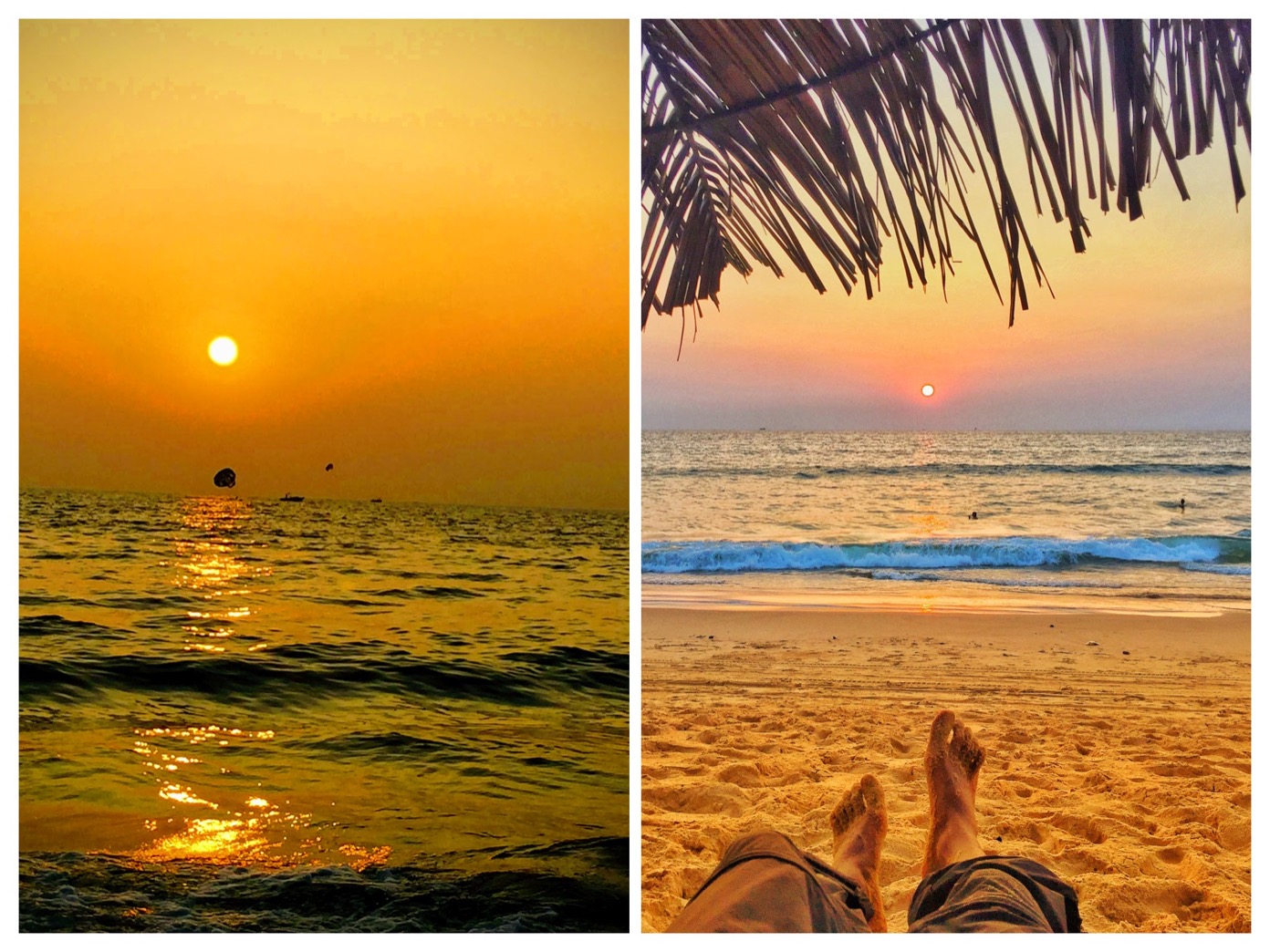
I crashed around in my bunk bed as I settled in for the night after lazing around and having conversations with the folks in the common area of the hostel, where I met a guy from China who had been living in India for some months now.
He mentioned that he used to work for a startup back in China and described how he had no work-life balance when he was there and got burned out. He planned to stay a few more months, travelling to Varanasi and Rajasthan before heading back.
The next morning was quite pleasant, woke up and had some breakfast and Mama Cecilia’s. The shrimps are to die for! I headed to Basilica de Bom Jesus
Famous throughout the Roman Catholic world, the imposing Basilica de Bom Jesus contains the tomb and mortal remains of St Francis Xavier, the so-called Apostle of the Indies. St Francis Xavier’s missionary voyages throughout the East became legendary. His ‘incorrupt’ body is in the mausoleum to the right, in a glass-sided coffin amid a shower of gilt stars.
Constructed between 1594 and 1605 AD, this church has a main altar, four side altars, two chapels, a sacristy and a choir.
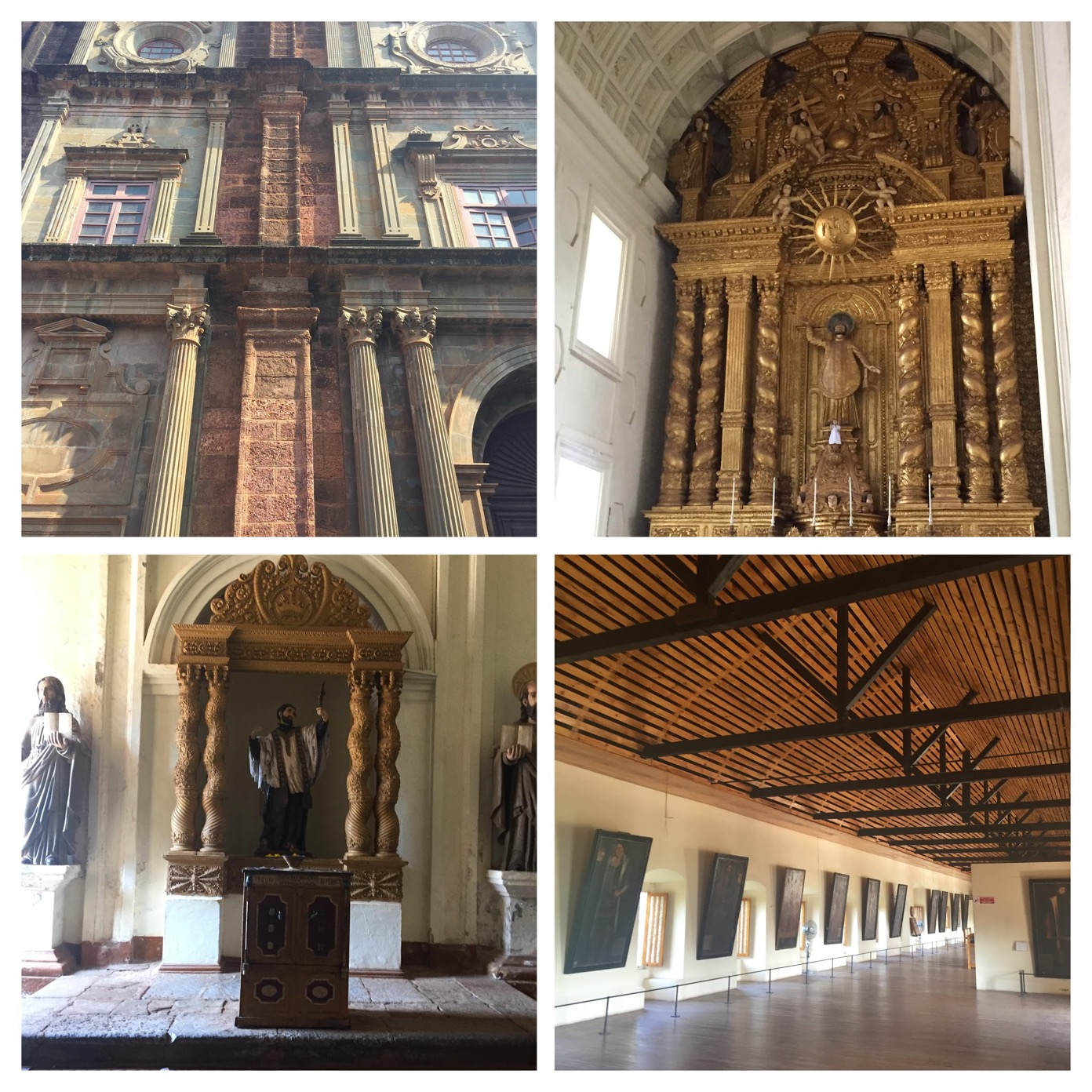
The main altar, the whole back wall is designed, like the facade in numerous carvings in wood, of pillars, friezes and arabesques all gilt in pure gold. Above the Altar and Tabernacle stands a giant statue of St. Ignatius of Loyola in the priestly vestments, nearly three meters high.
The church is dedicated to Jesus — in Portuguese Bom Jesus meaning Good Jesus.
The day ended with me heading back to the hostel and packing my bags, yet again to my final destination. Which was home indeed.
I boarded a bus back to Bangalore, this one being an Airavat. As I felt I really need to rest for a bit as the last few days had quite been something for me.
Reaching home, was another level of satisfaction. I had finally completed the trip which was an impromptu one and I was very happy that I made it.
I did something very similar a few years back when I did my backpacking trip to Himachalwhile I was in college. And this felt very similar, just that this one was solo.
7 days of backpacking across the southern edge of India had come to an end after completing close to 1400kms.
As you might have noticed, I had to rush through the last part of the trip. The initial plan was to spend two nights in every place, but as luck would have had it. It was cut short as I had to be present in Bangalore for DevOpsDays India, where I would be giving a talk.
Would love to visit the southern coast again, covering Kerala and Mangalore. Cochin and Aleppey comes over my mind.
Until next time!